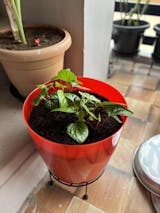
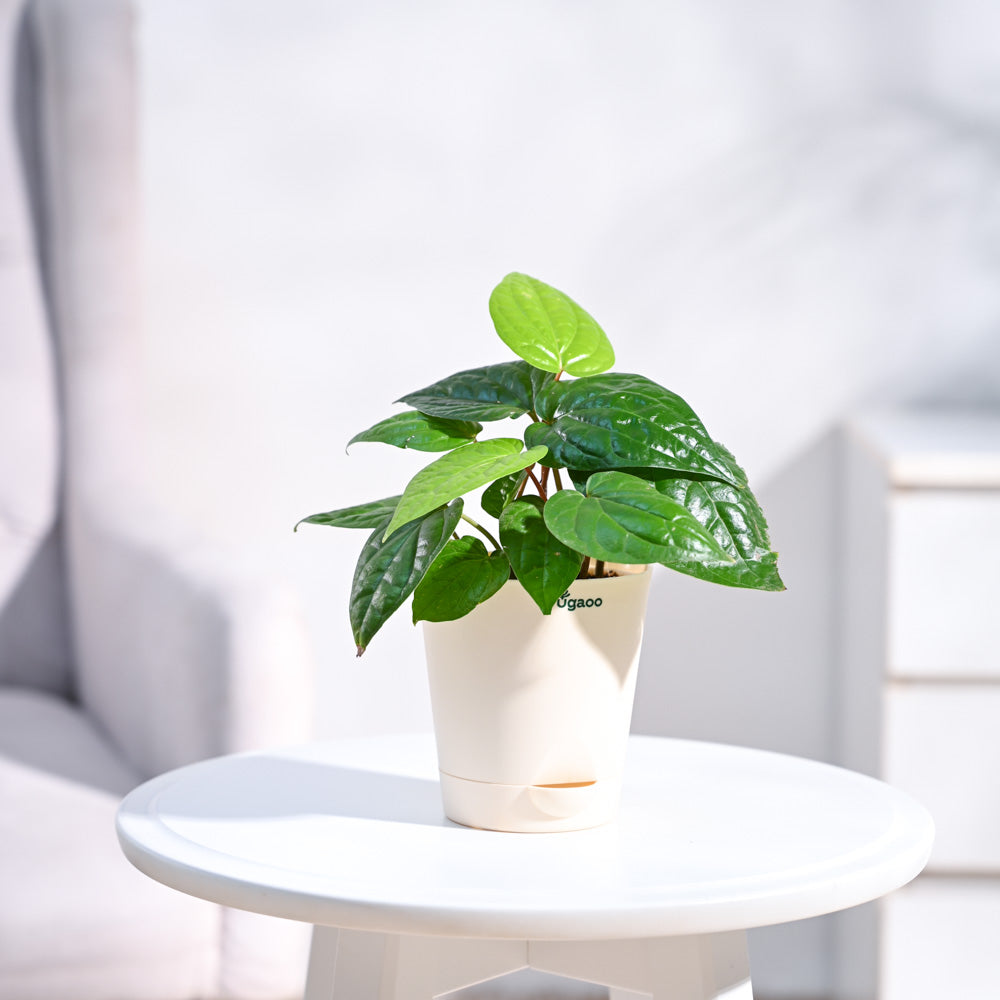


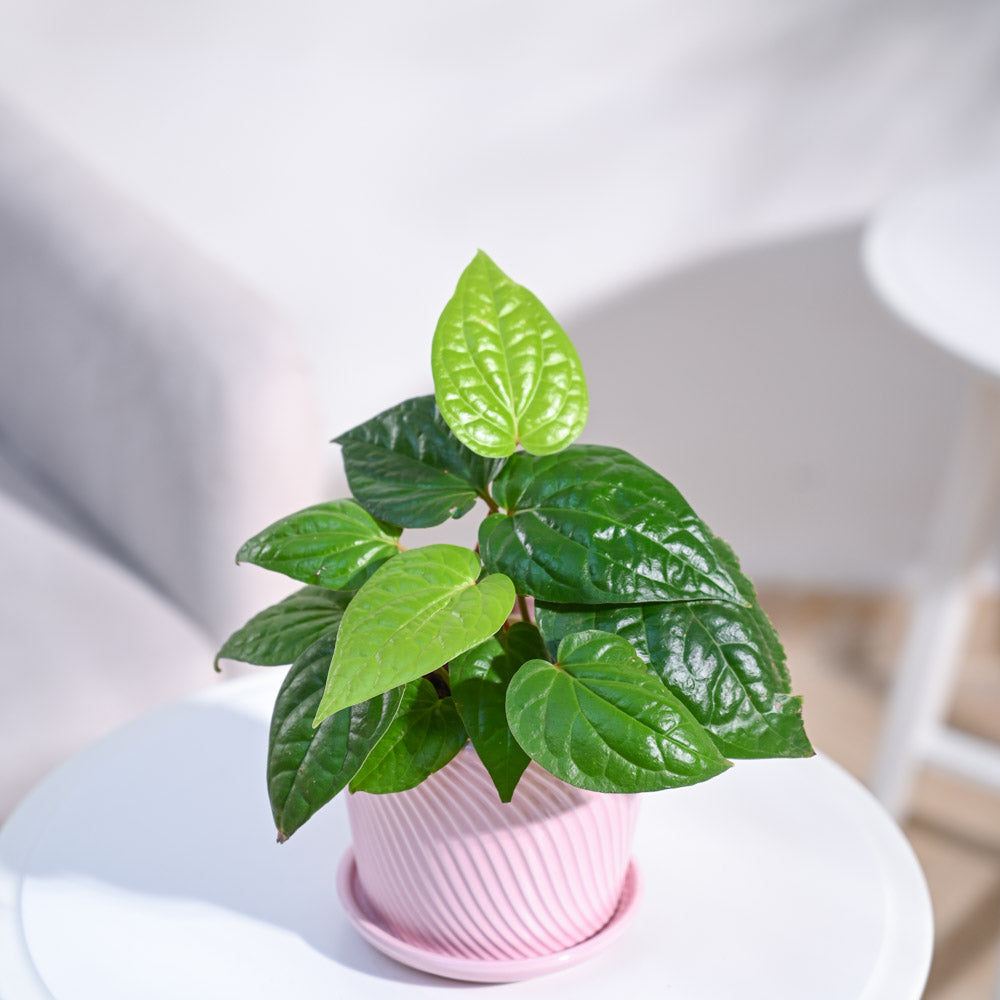
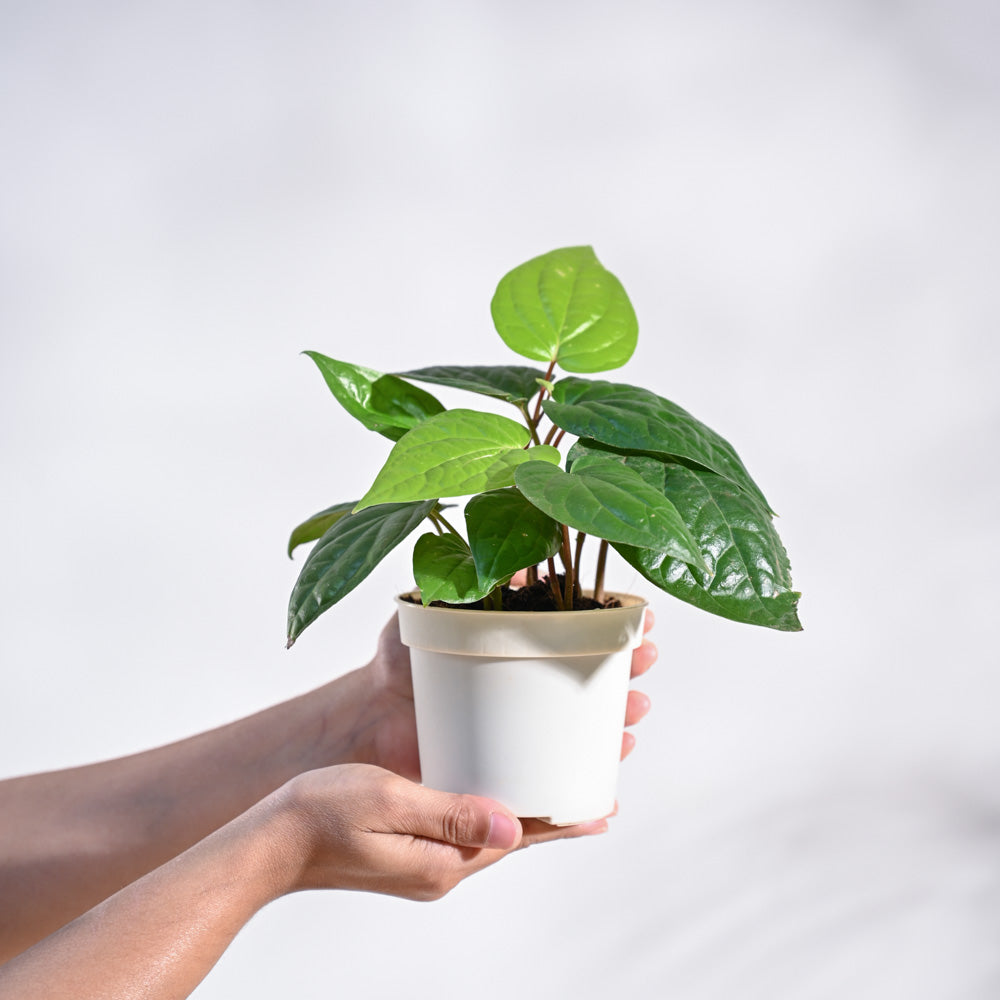

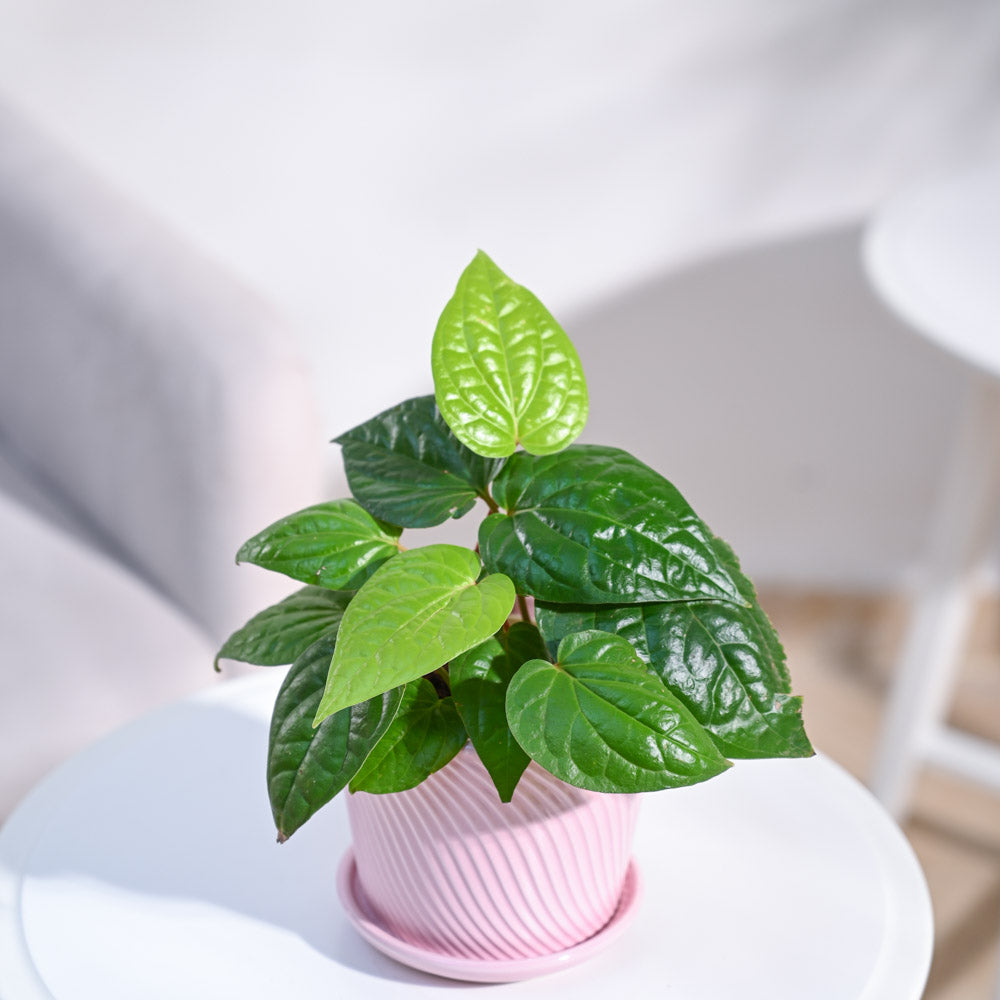
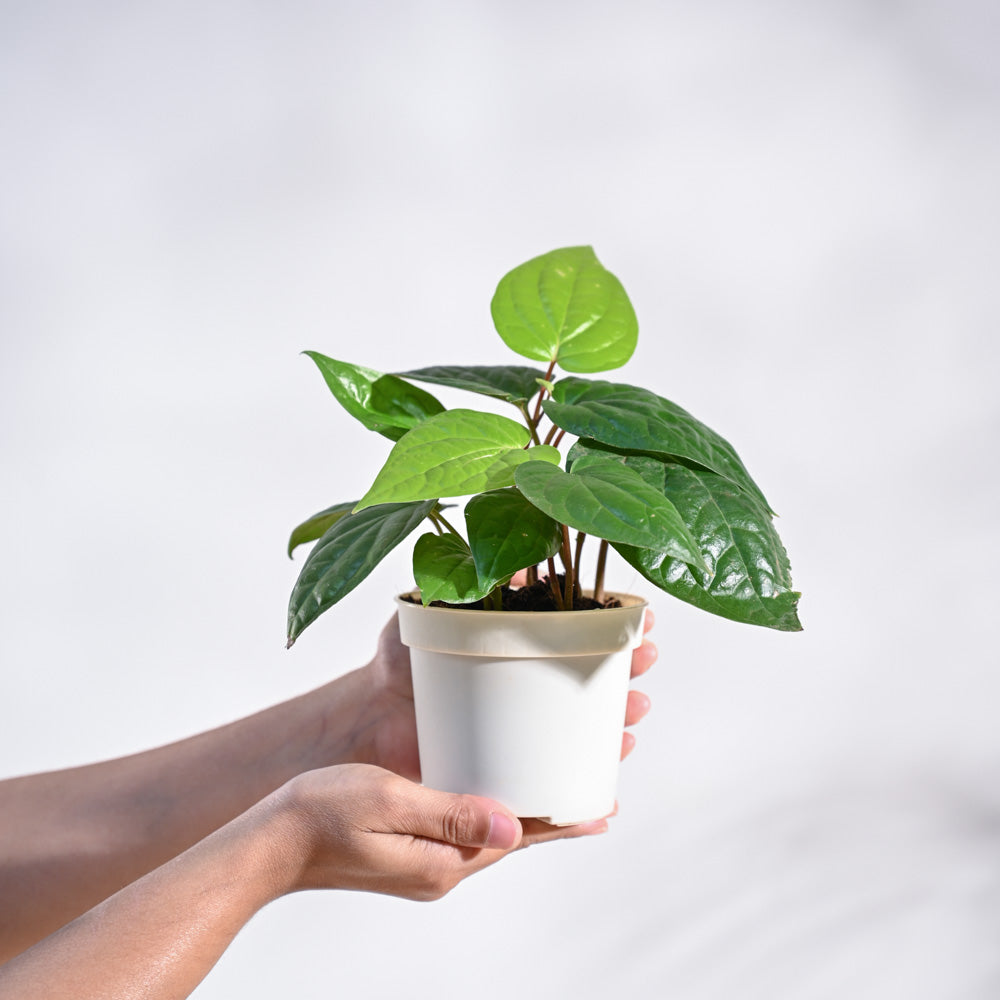
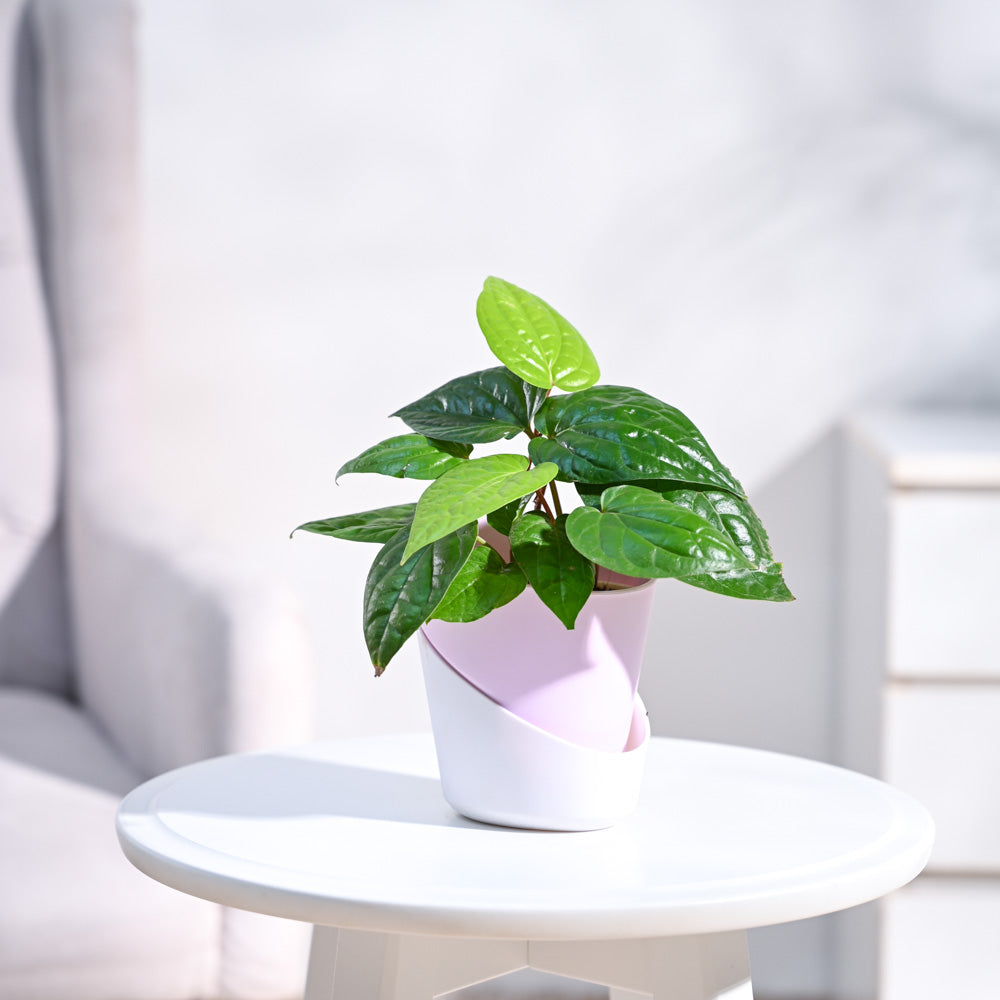
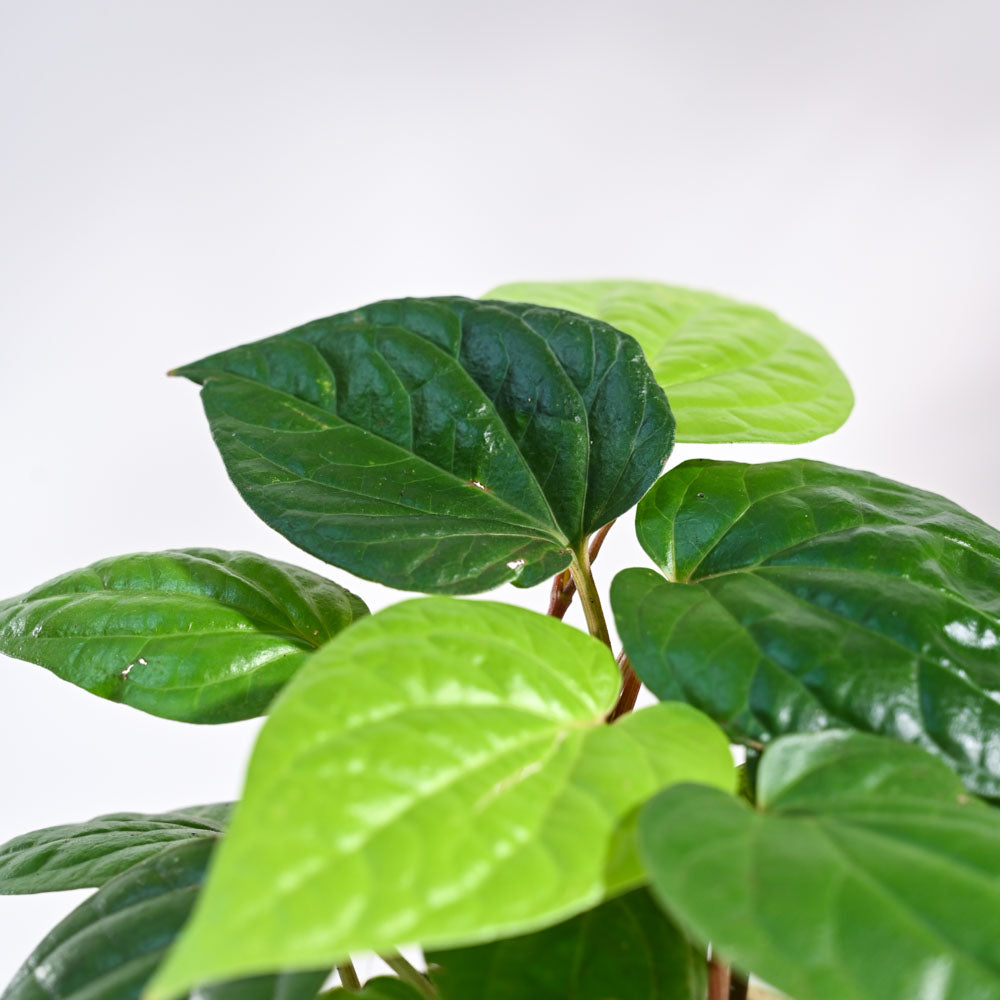
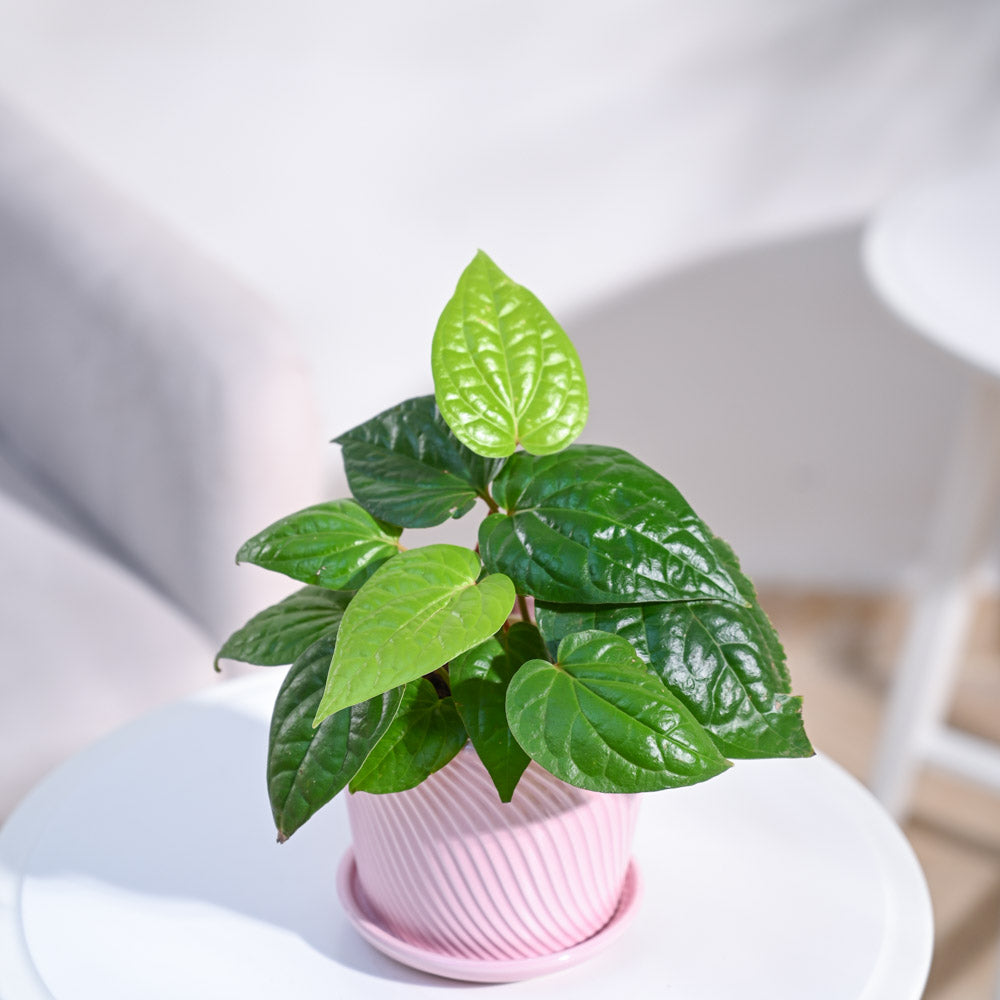

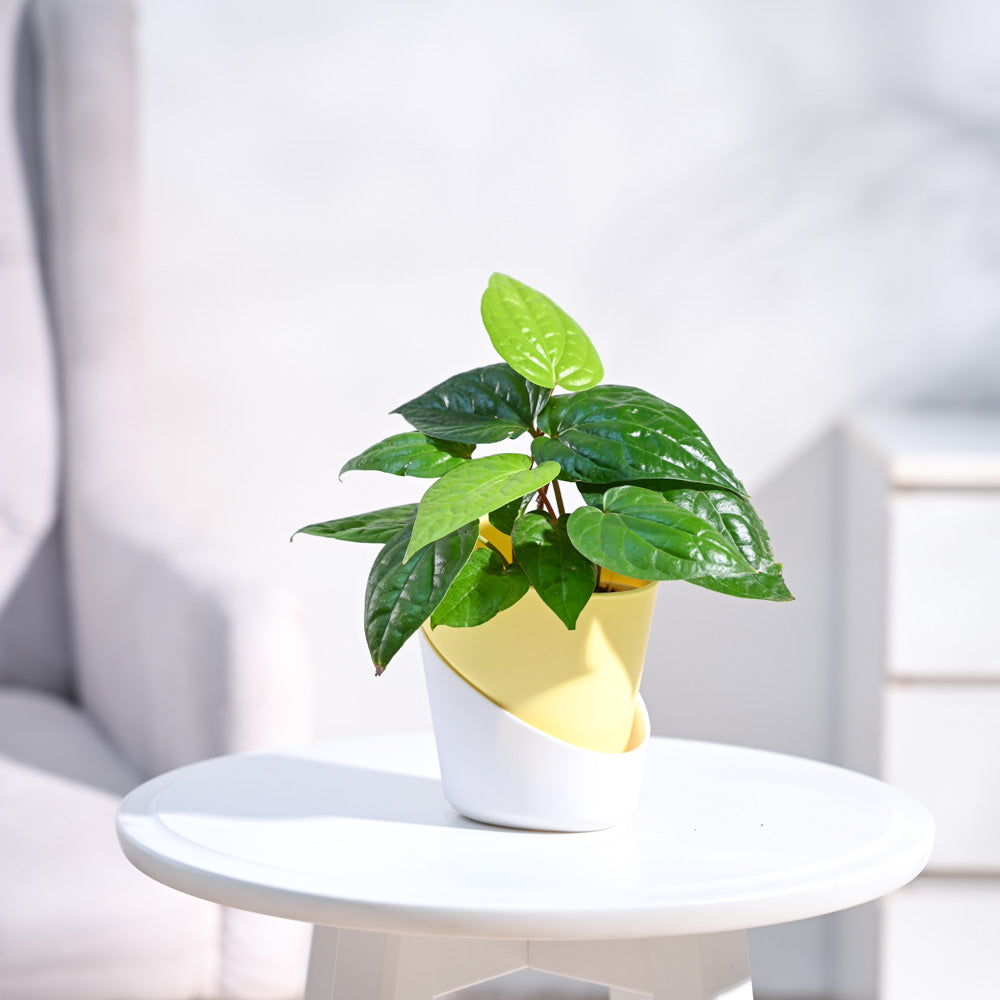
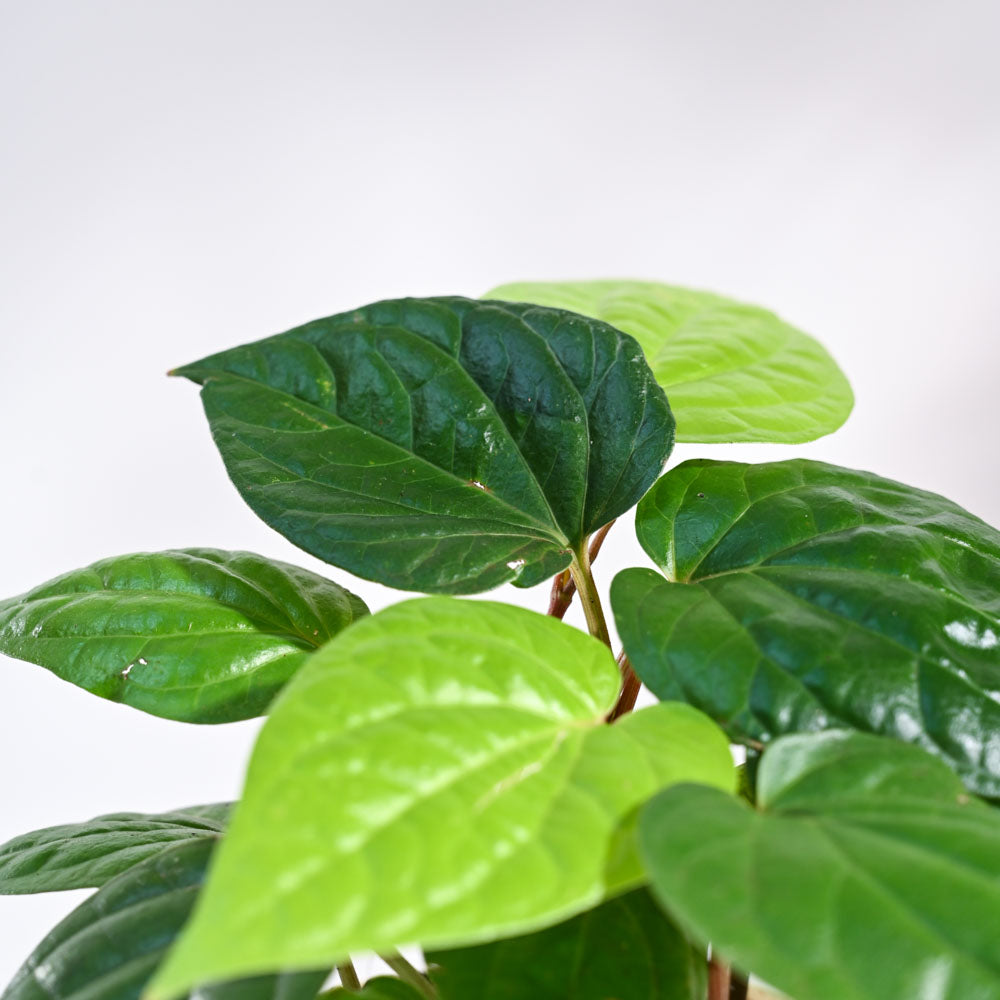
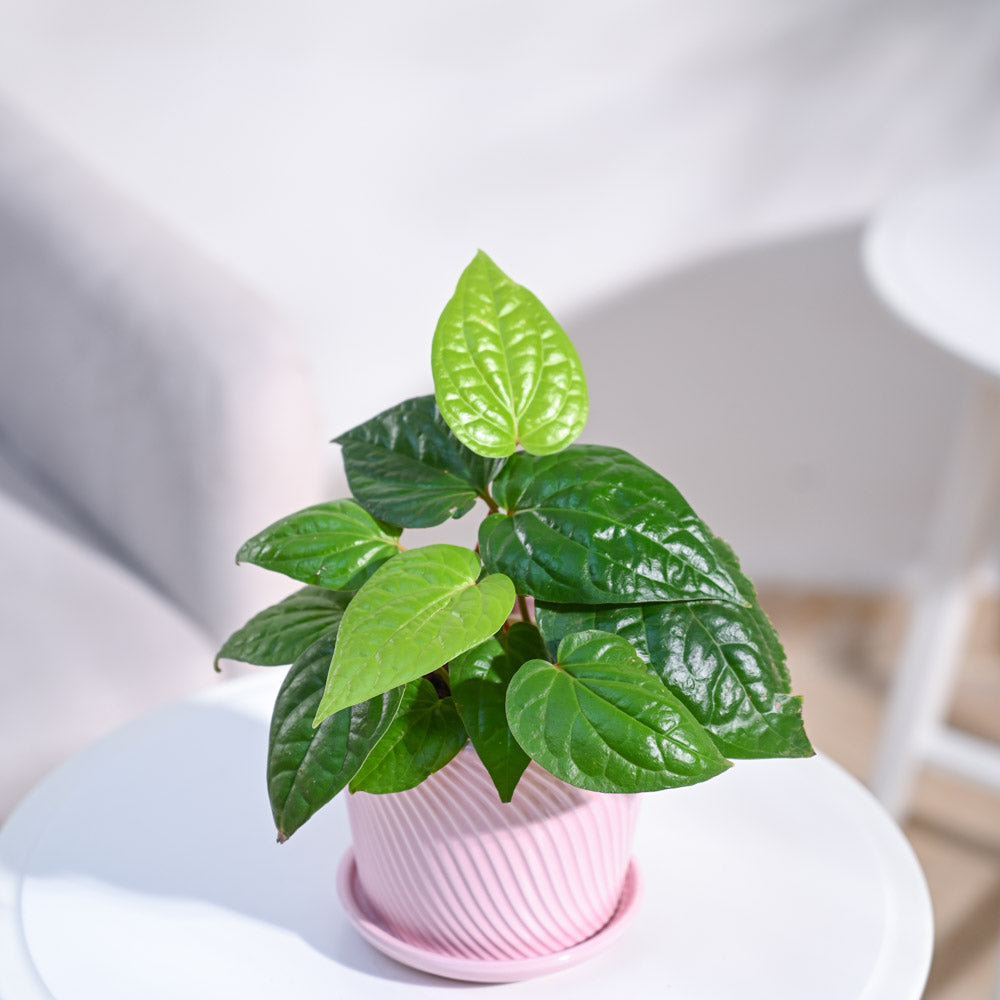
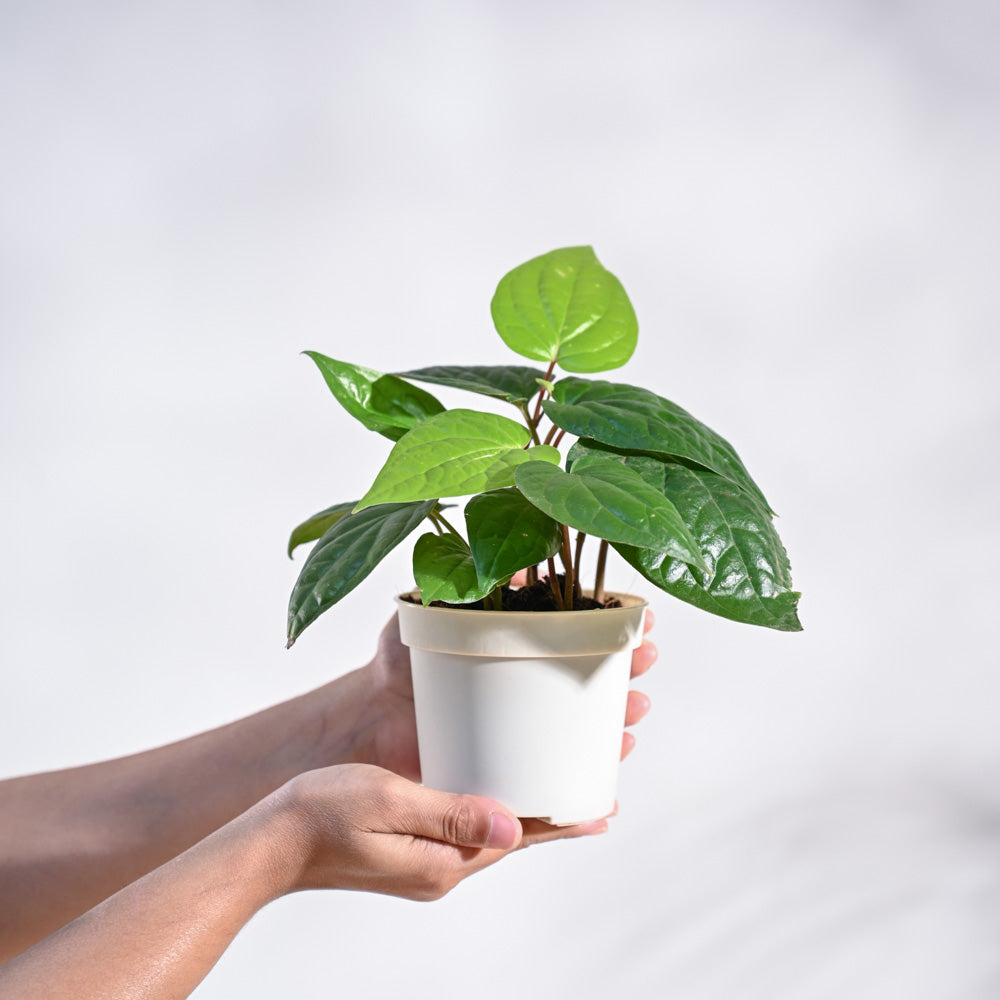


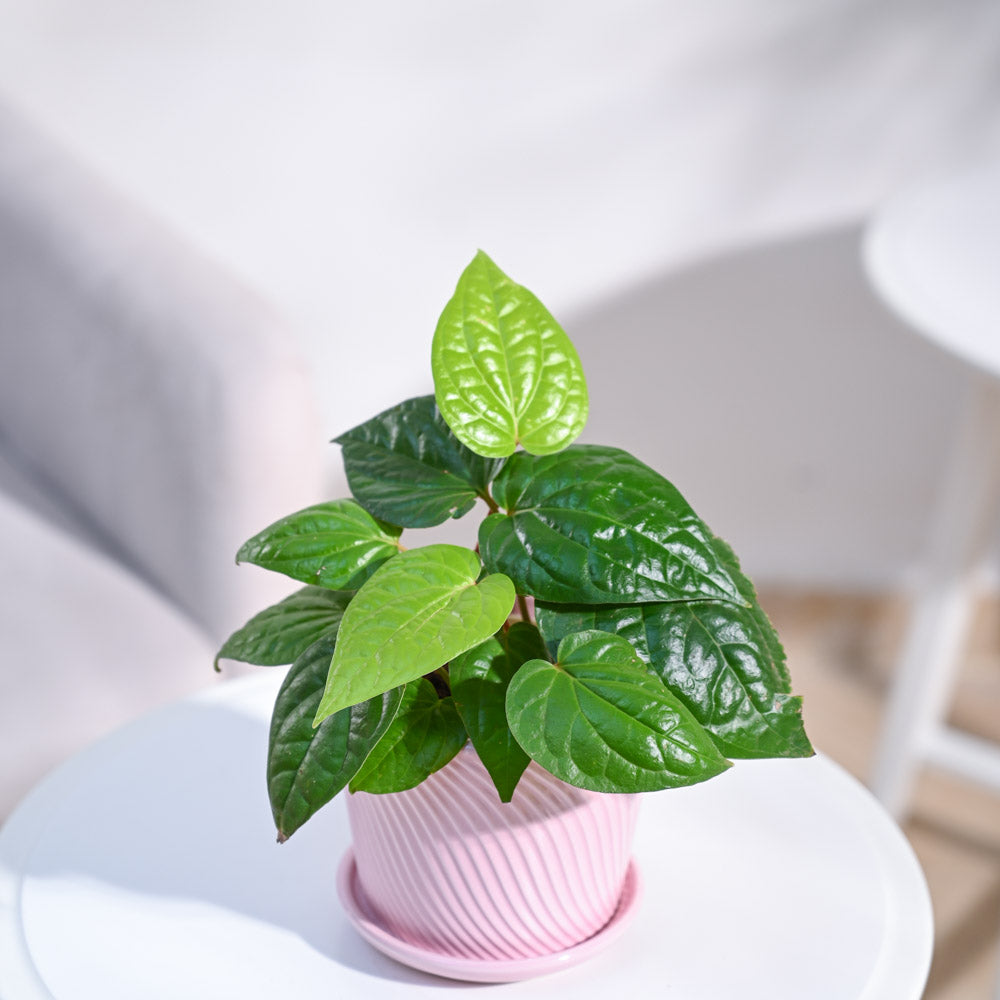
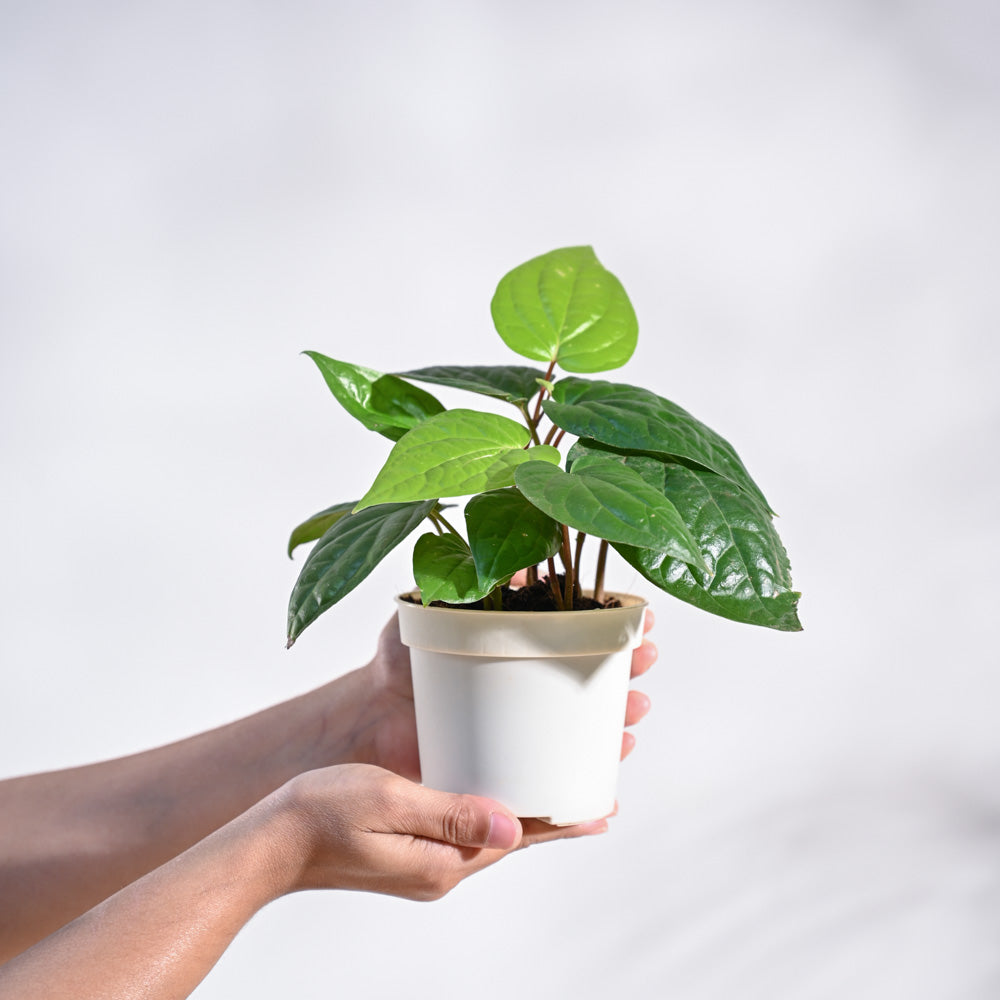
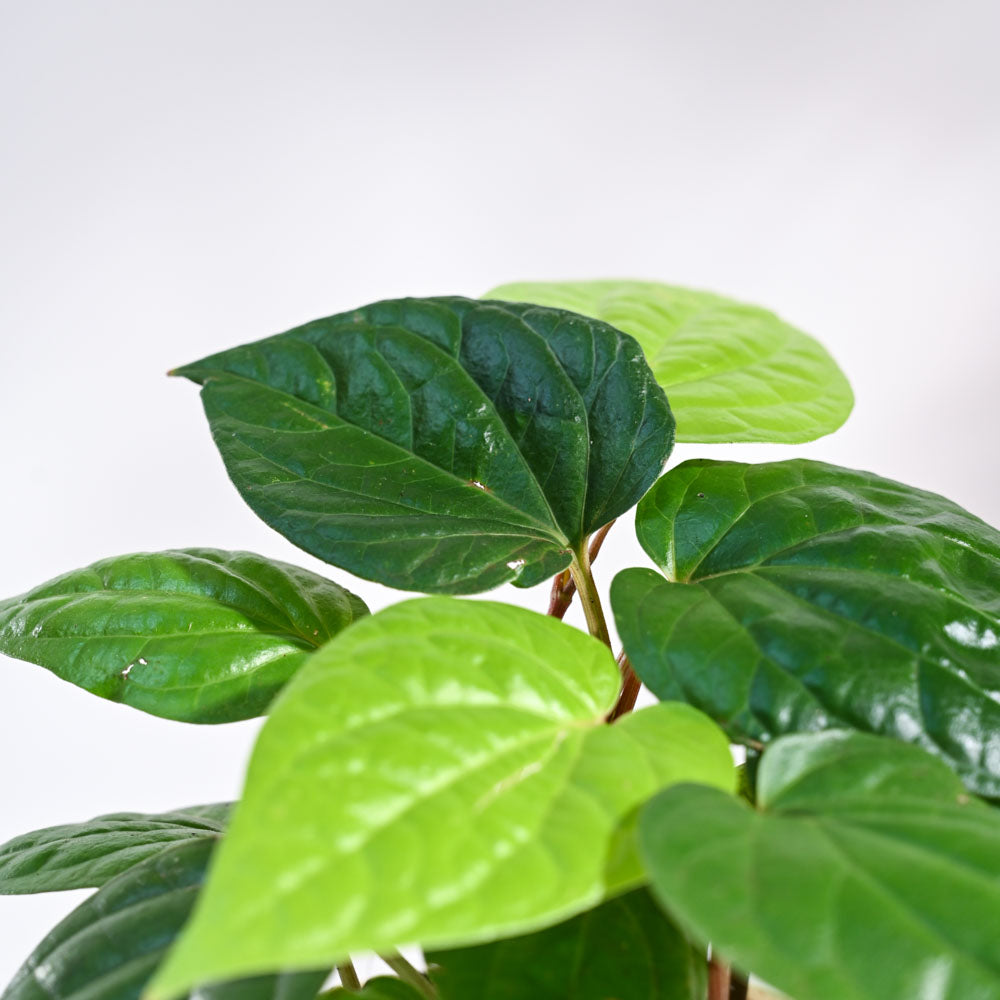


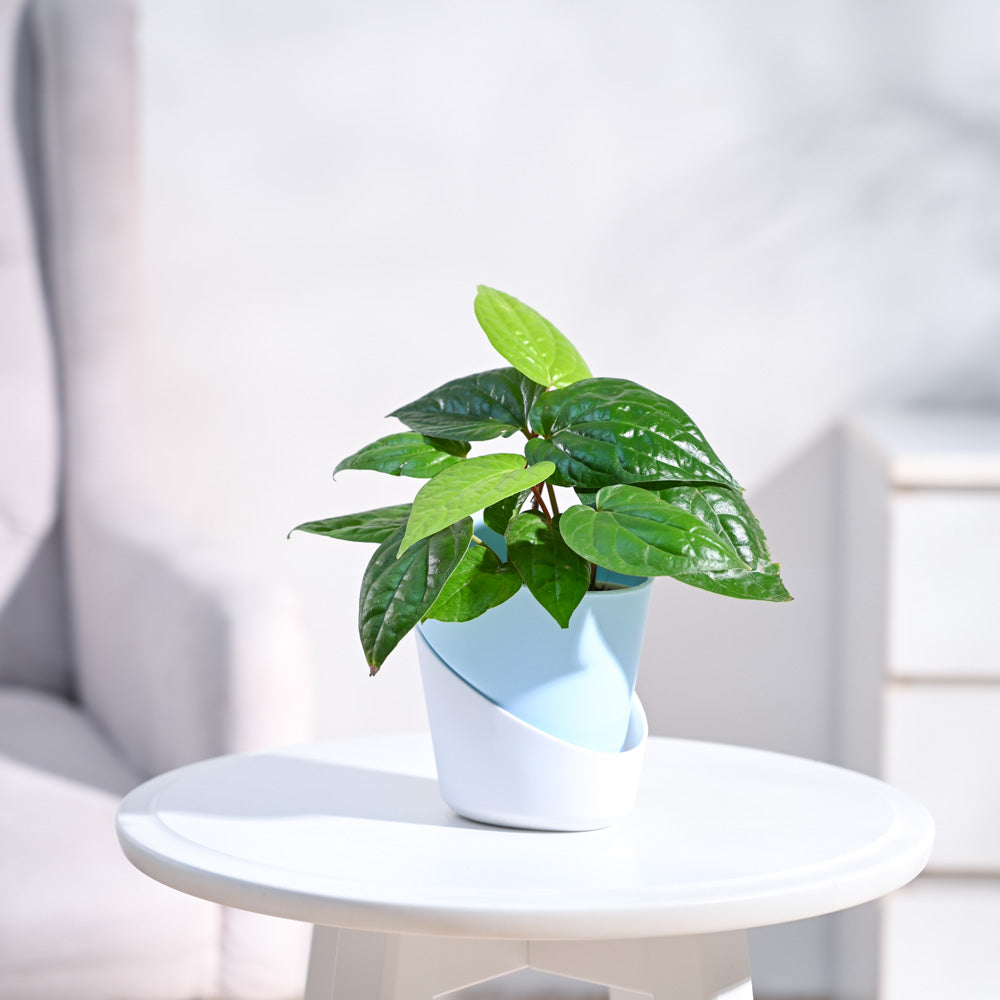
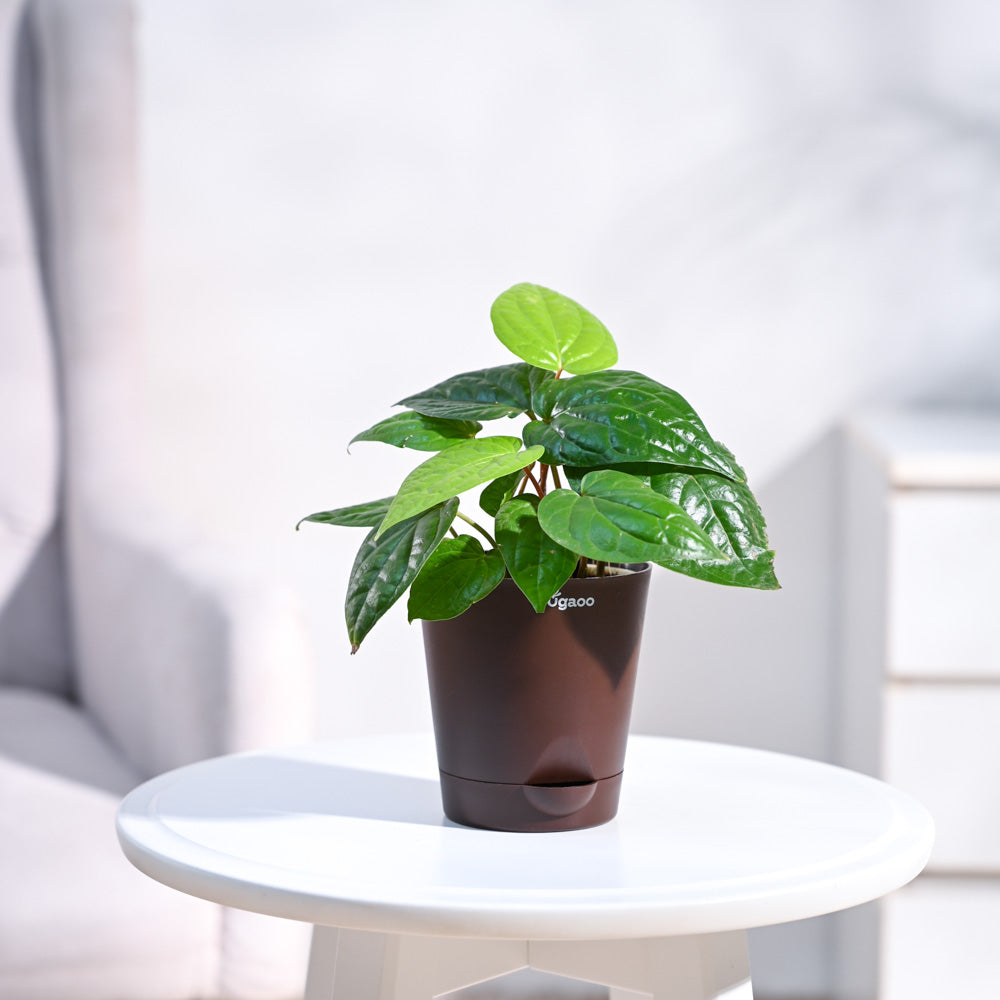
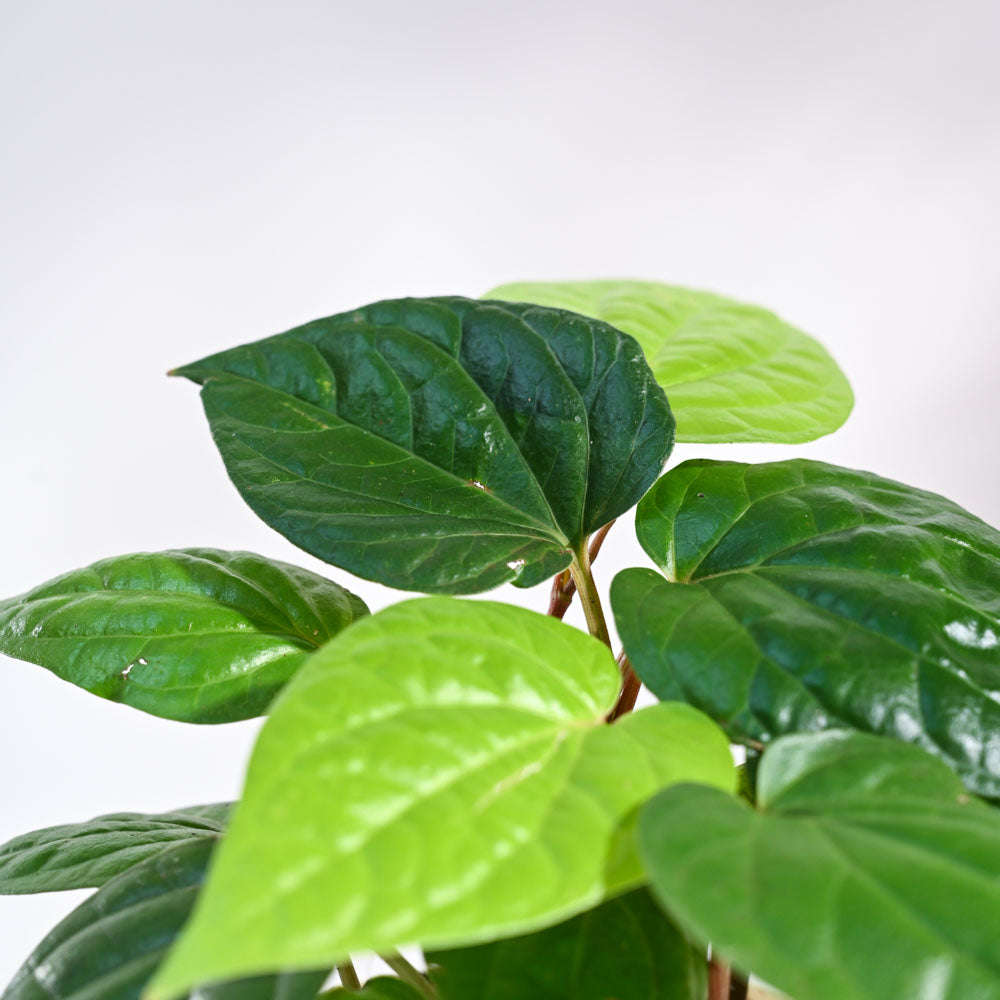
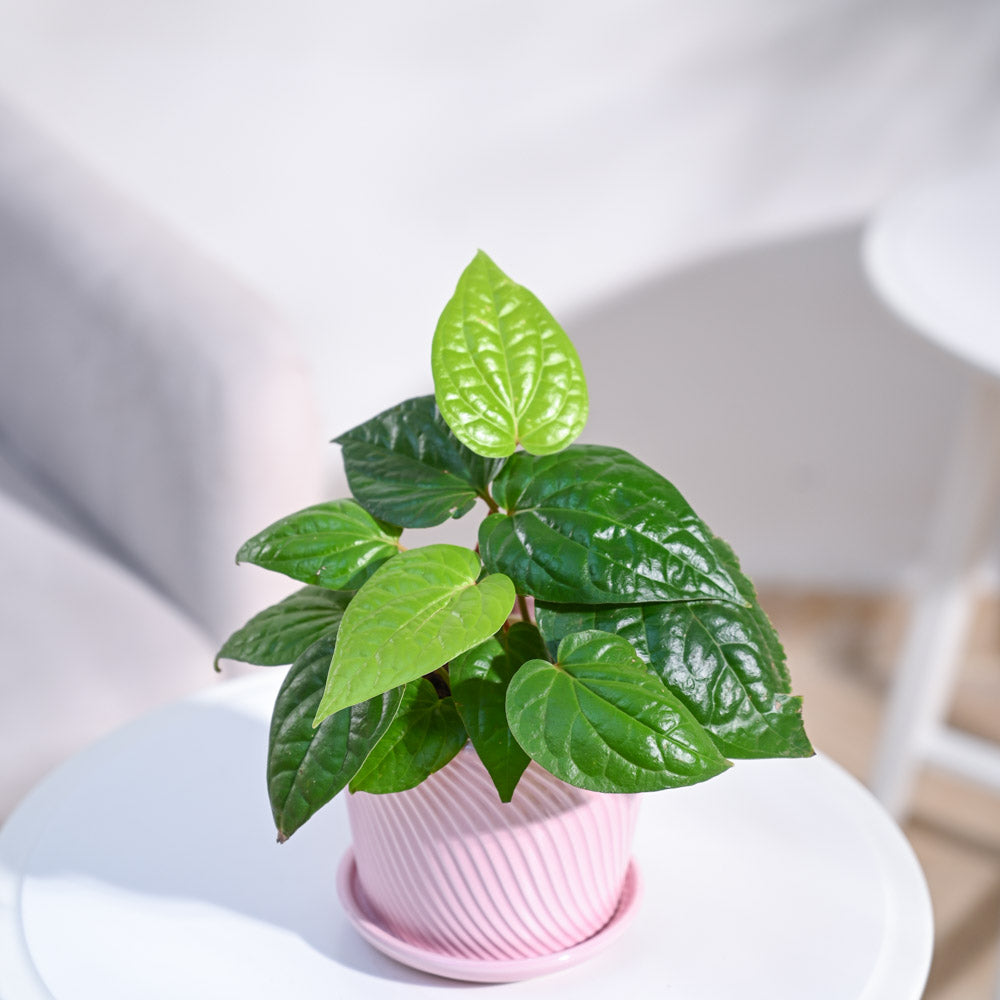
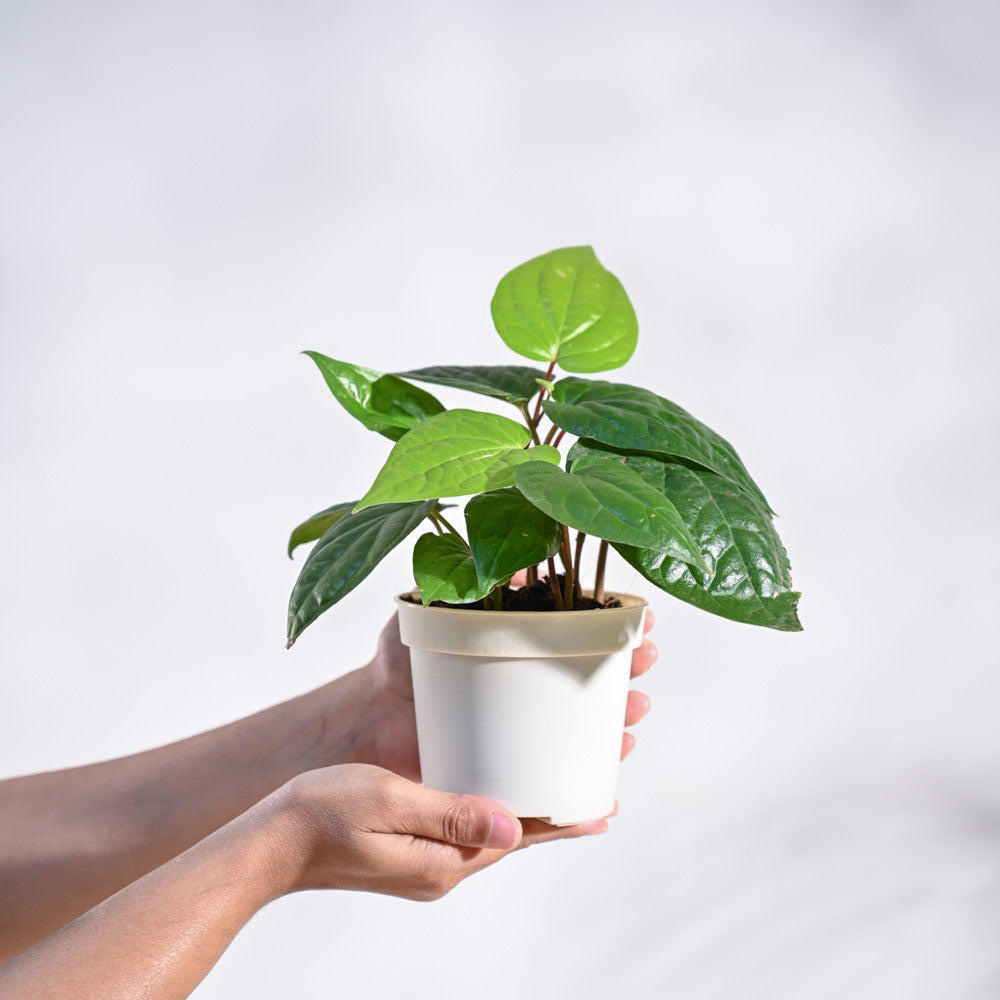
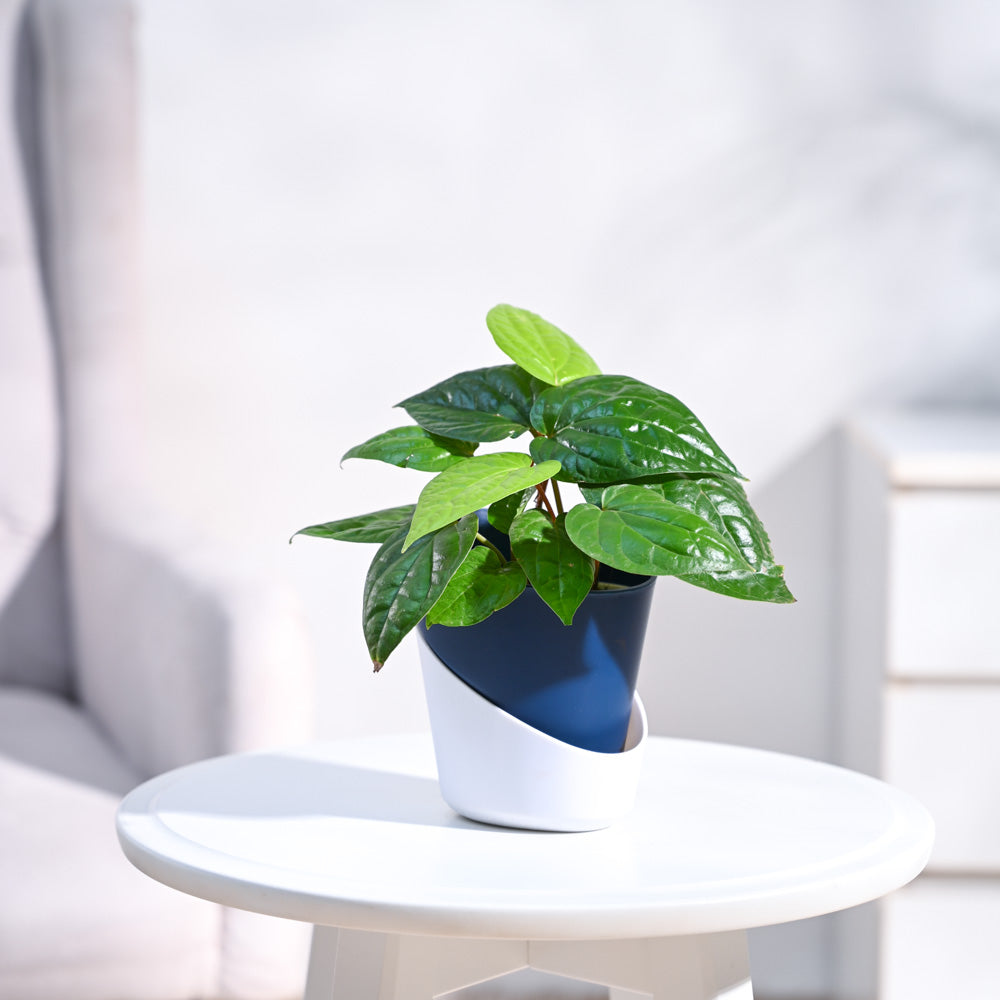
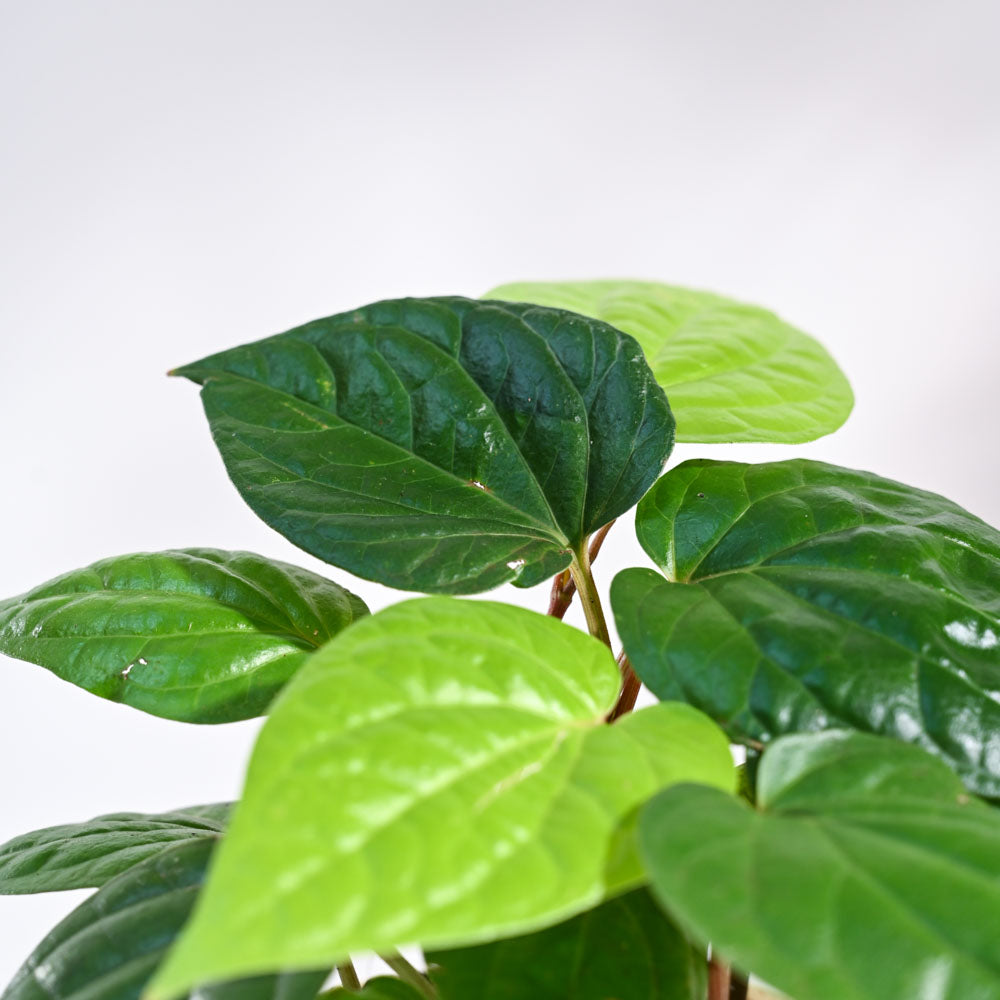
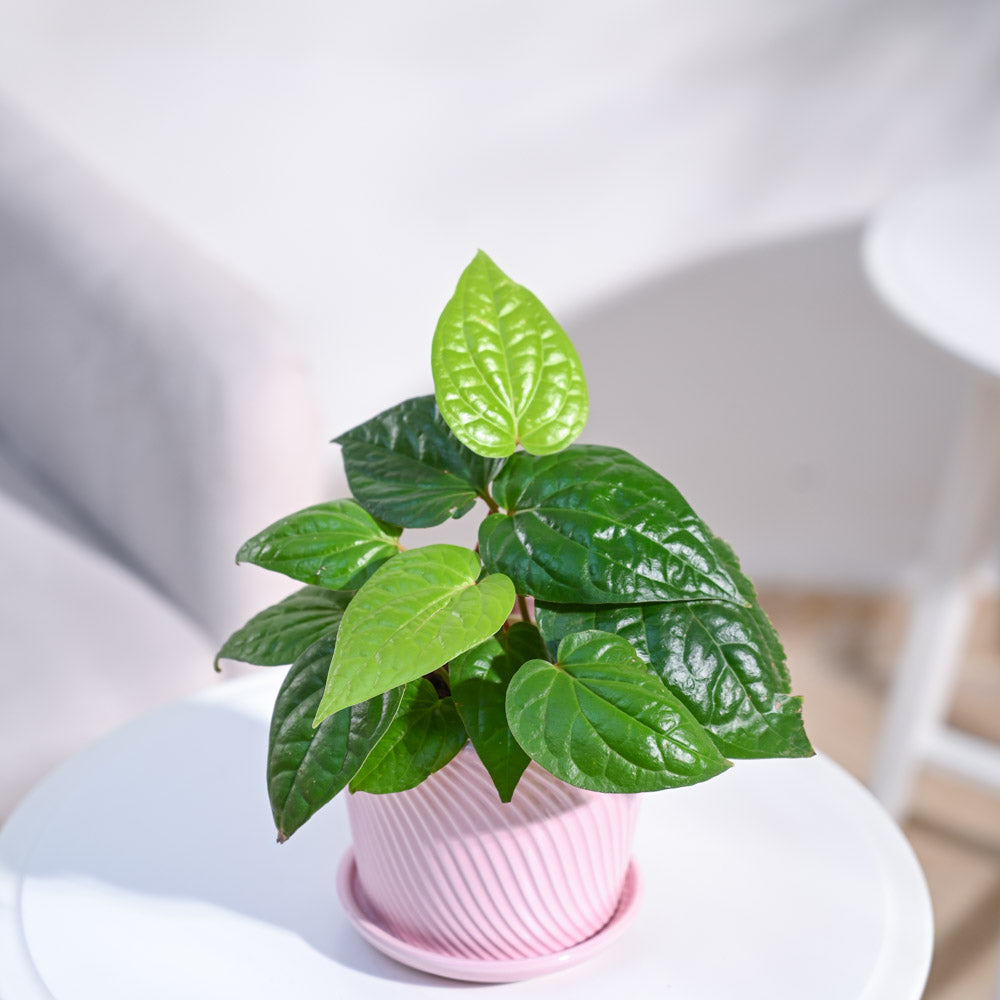
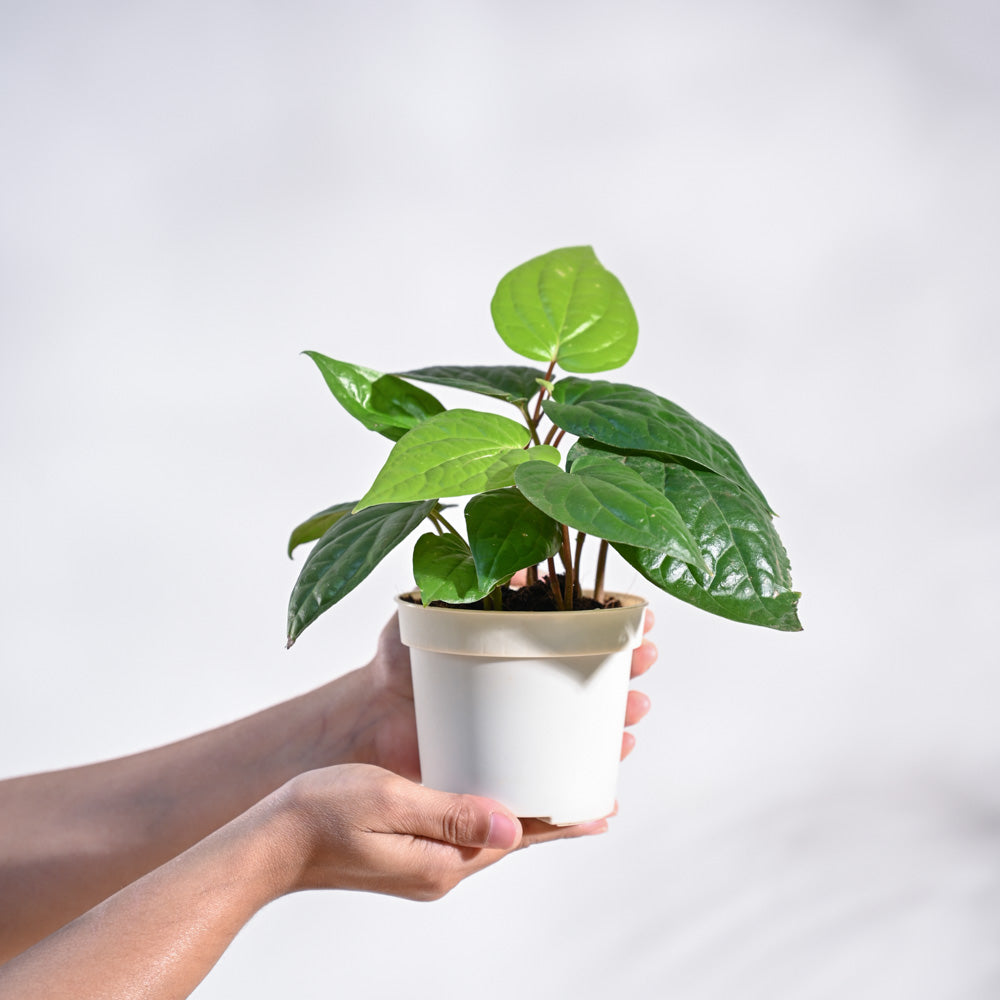



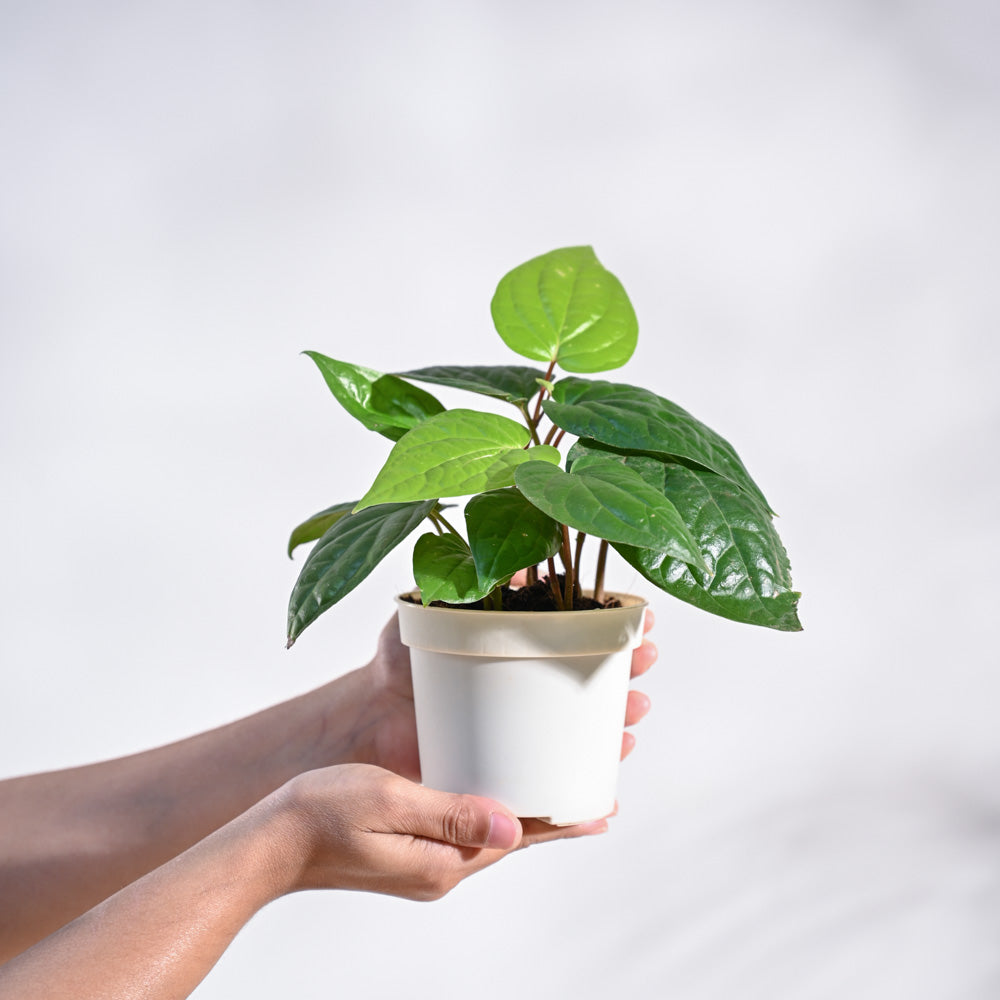


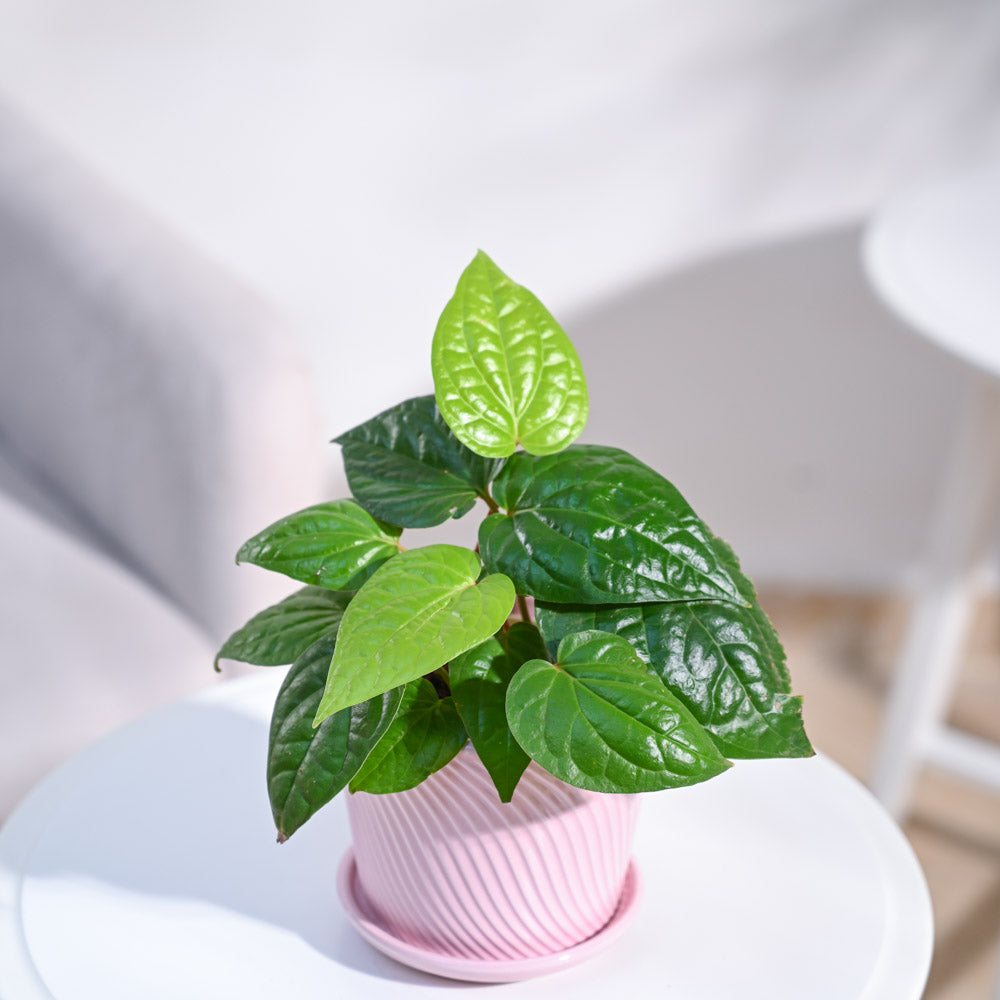
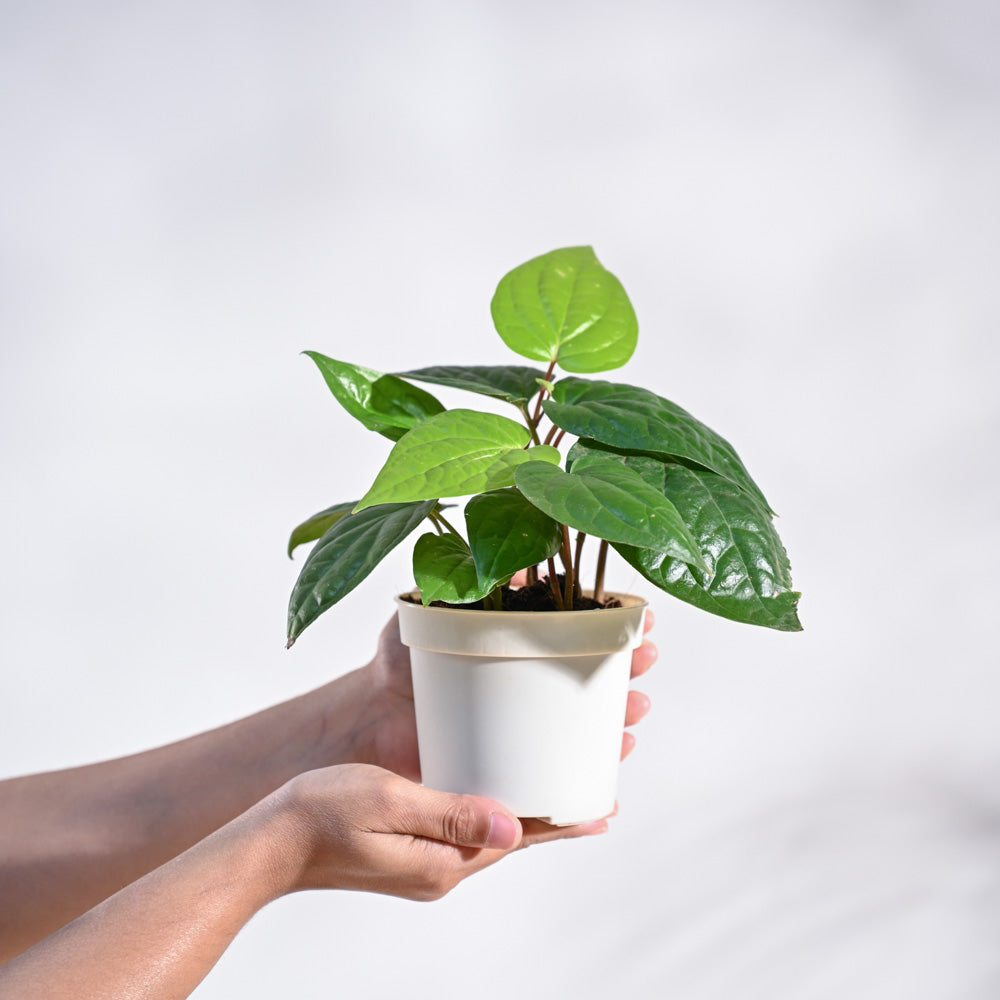
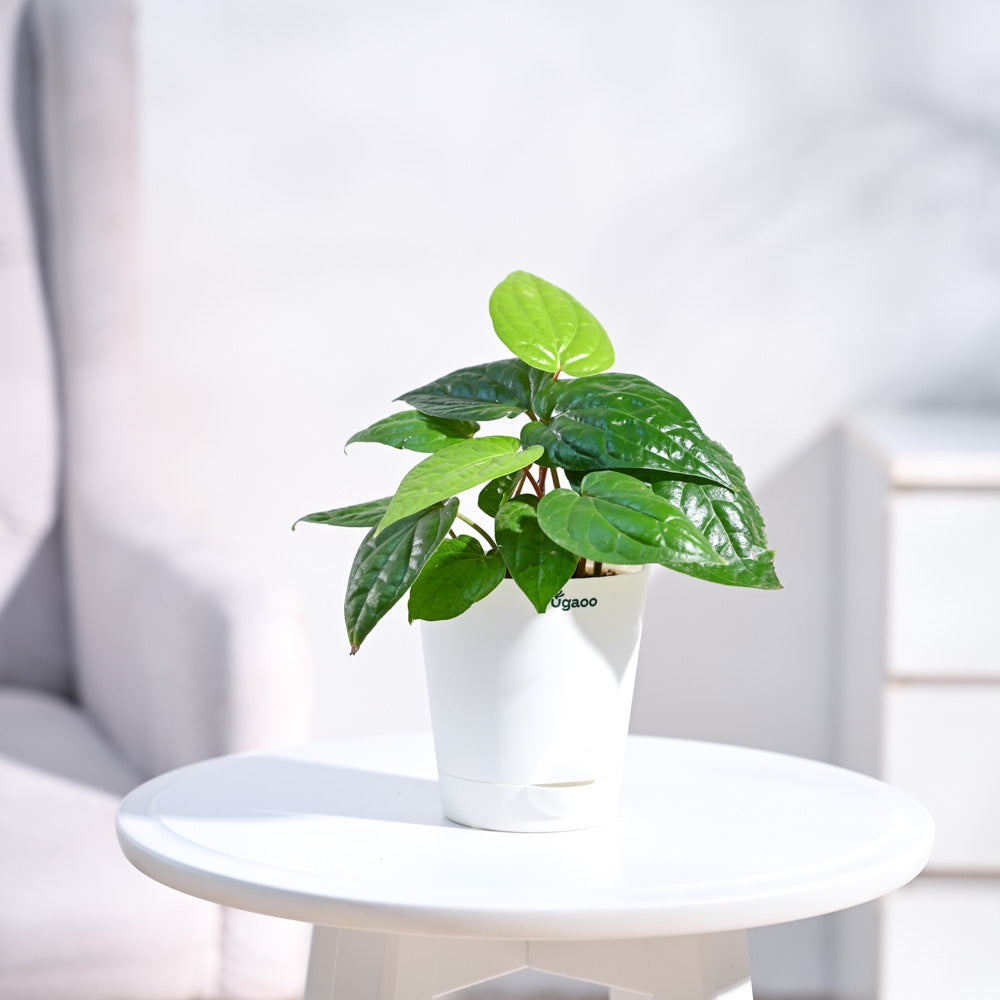


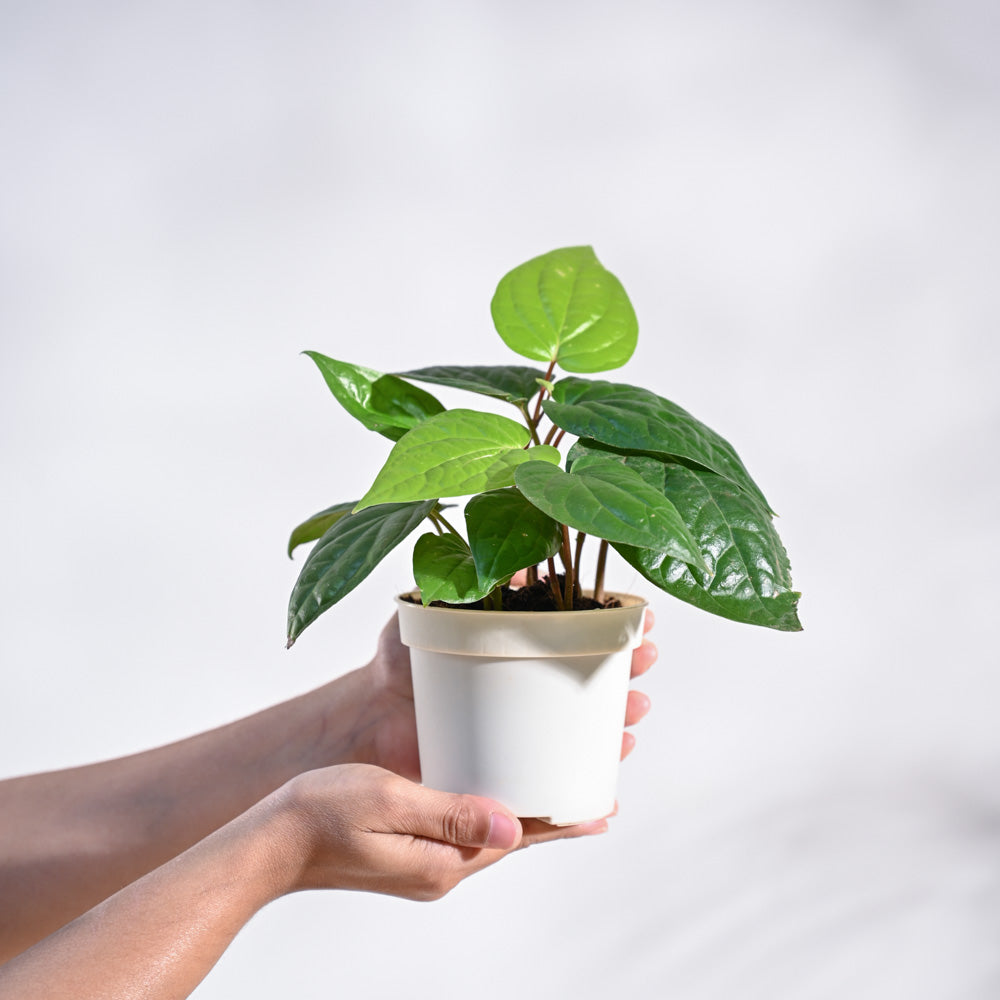


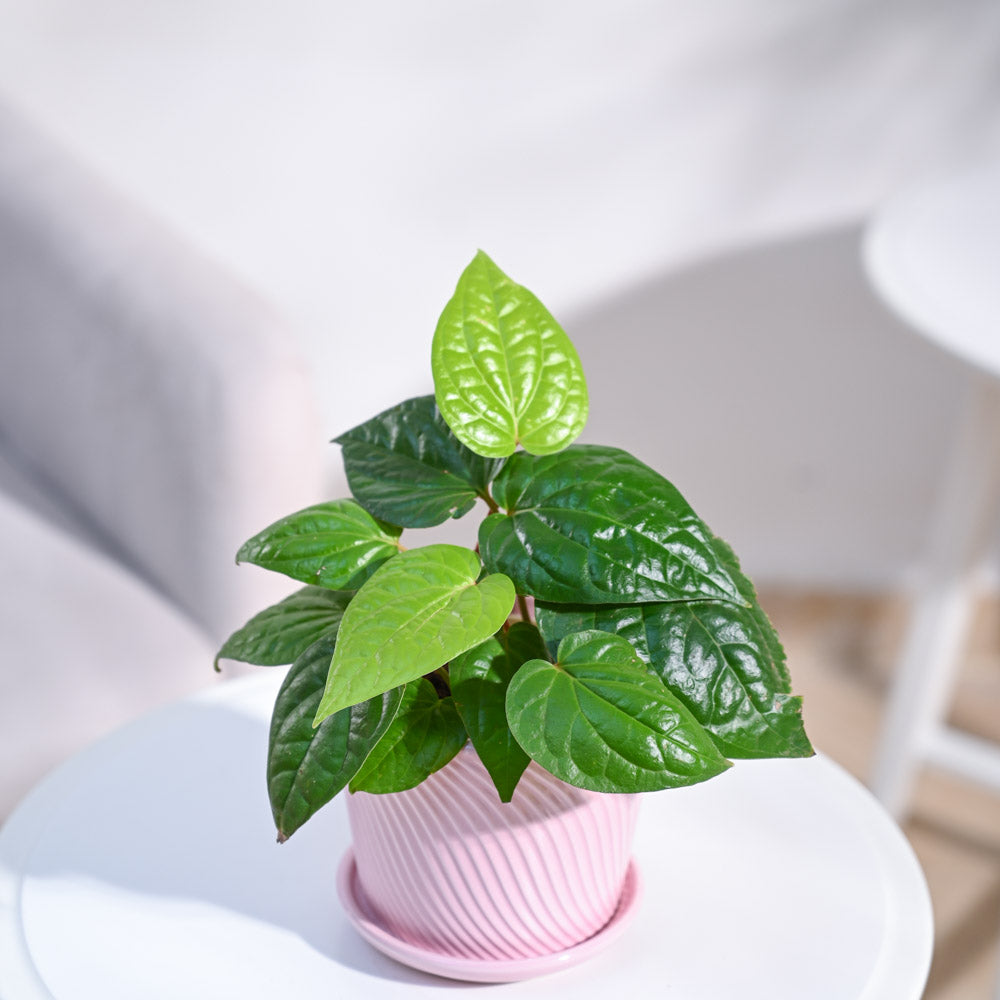
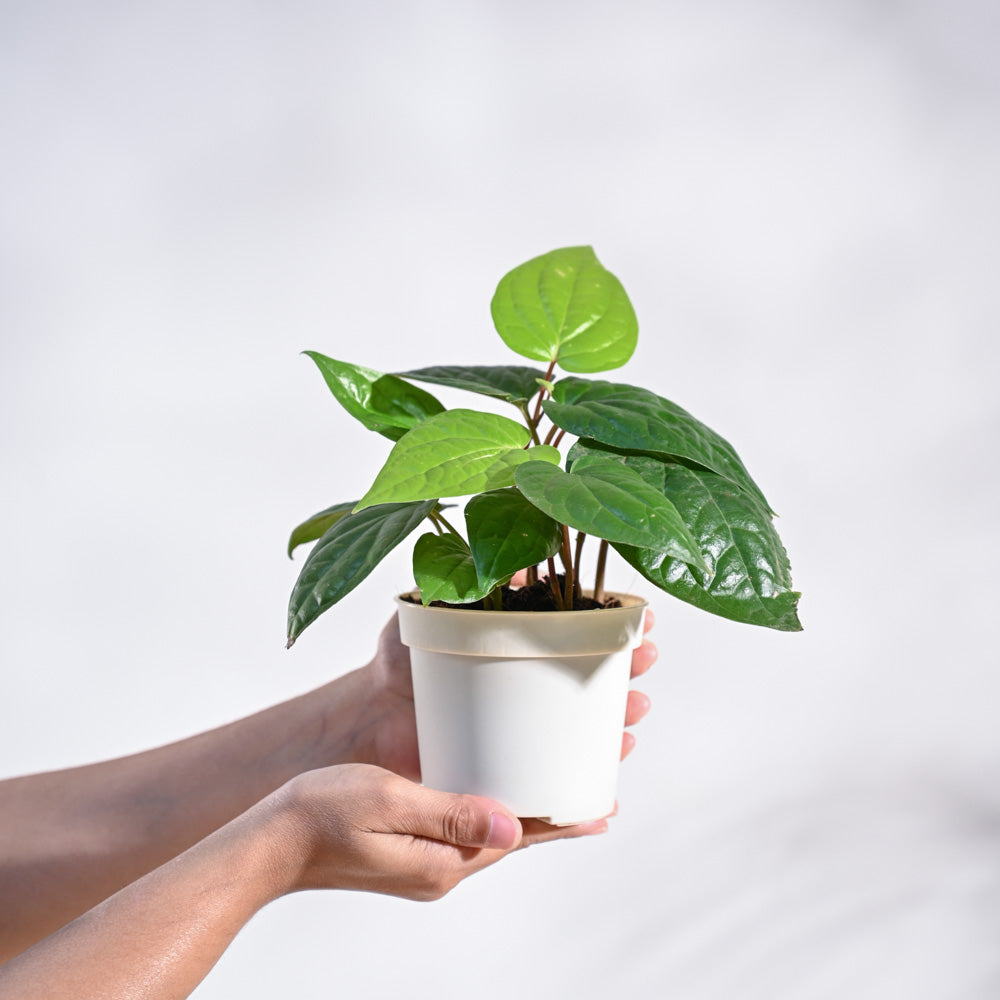
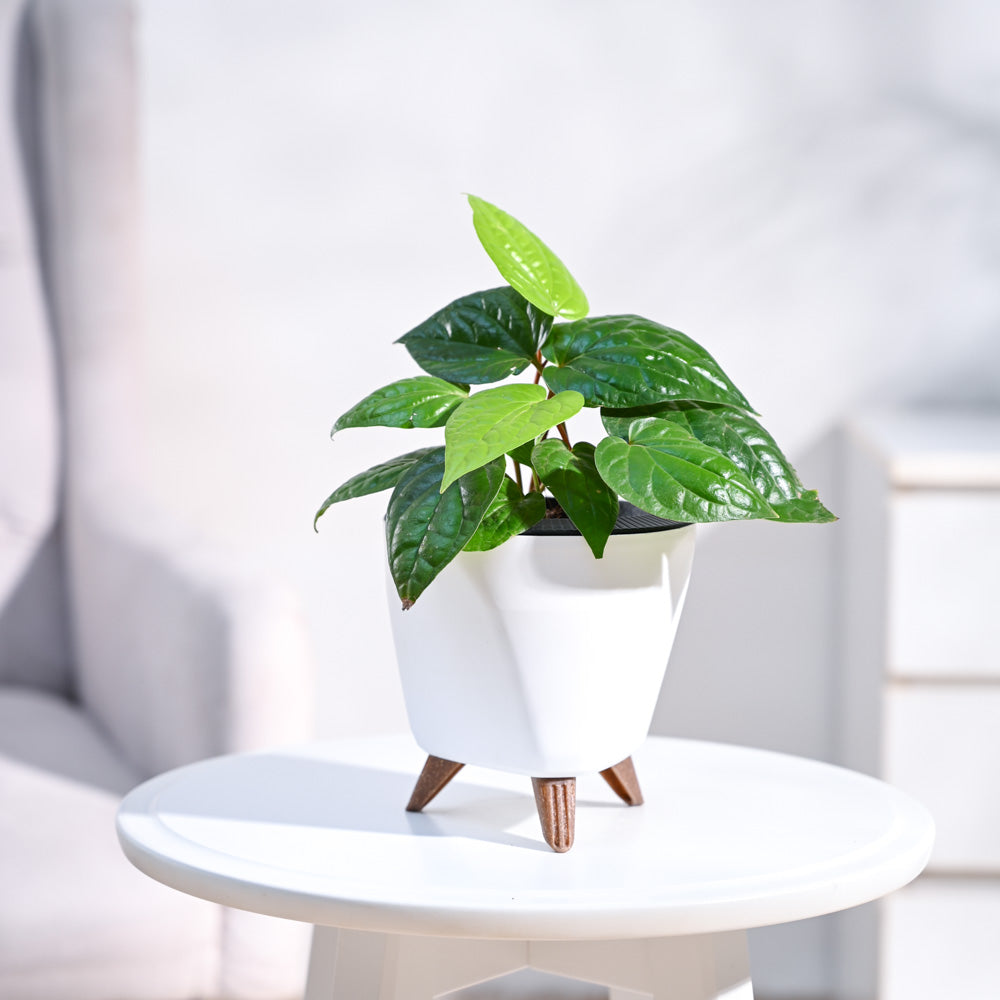

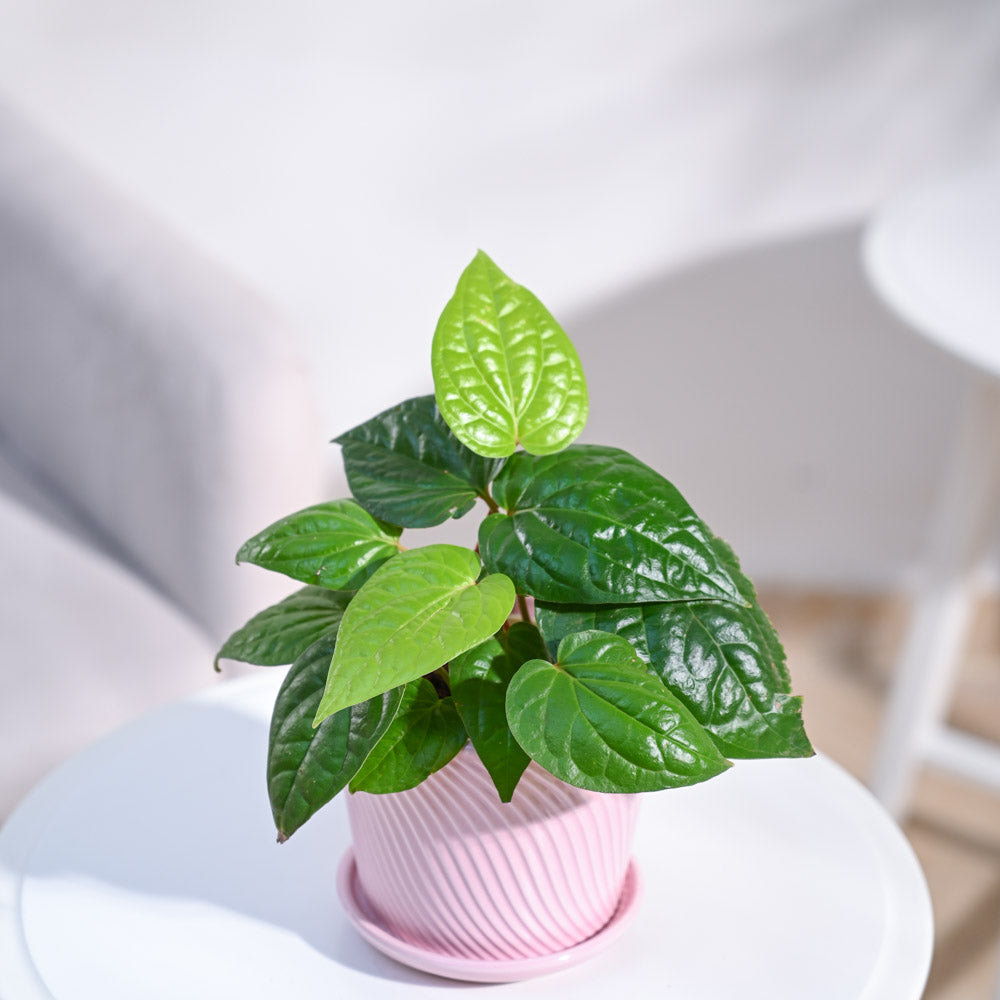
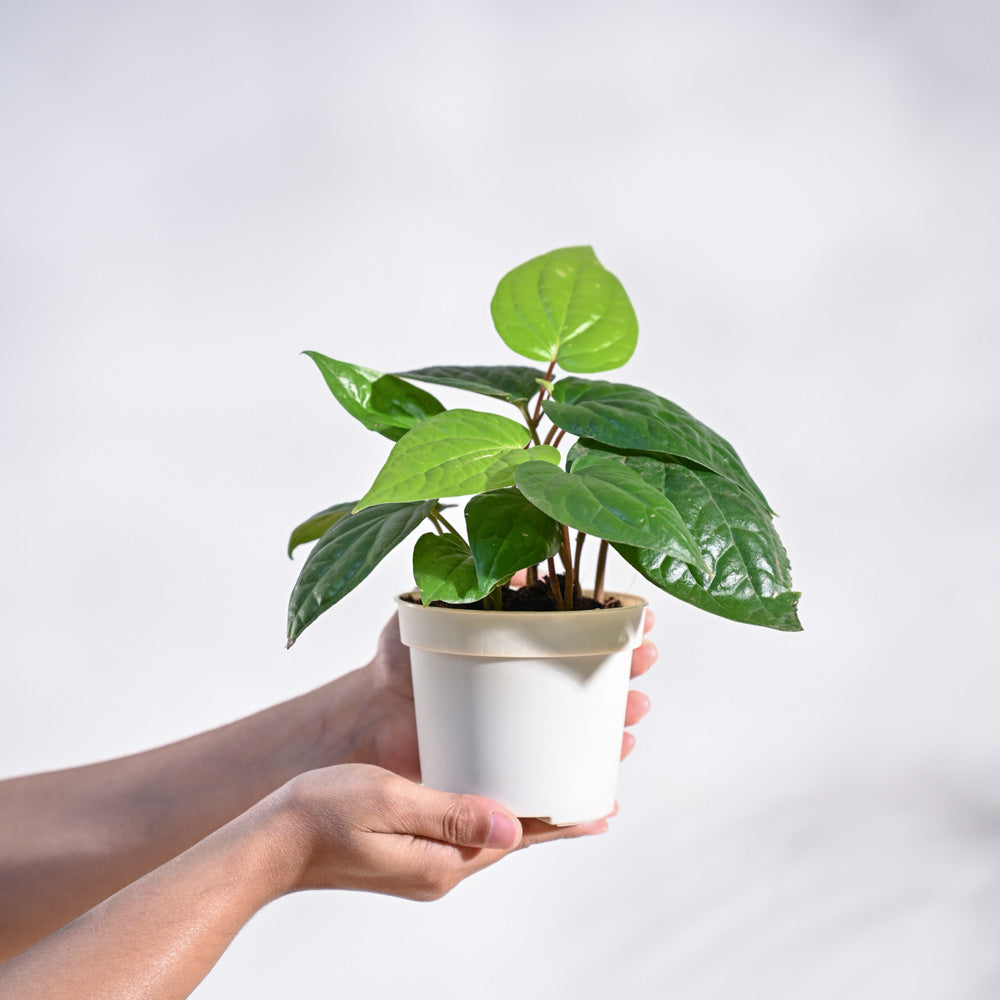


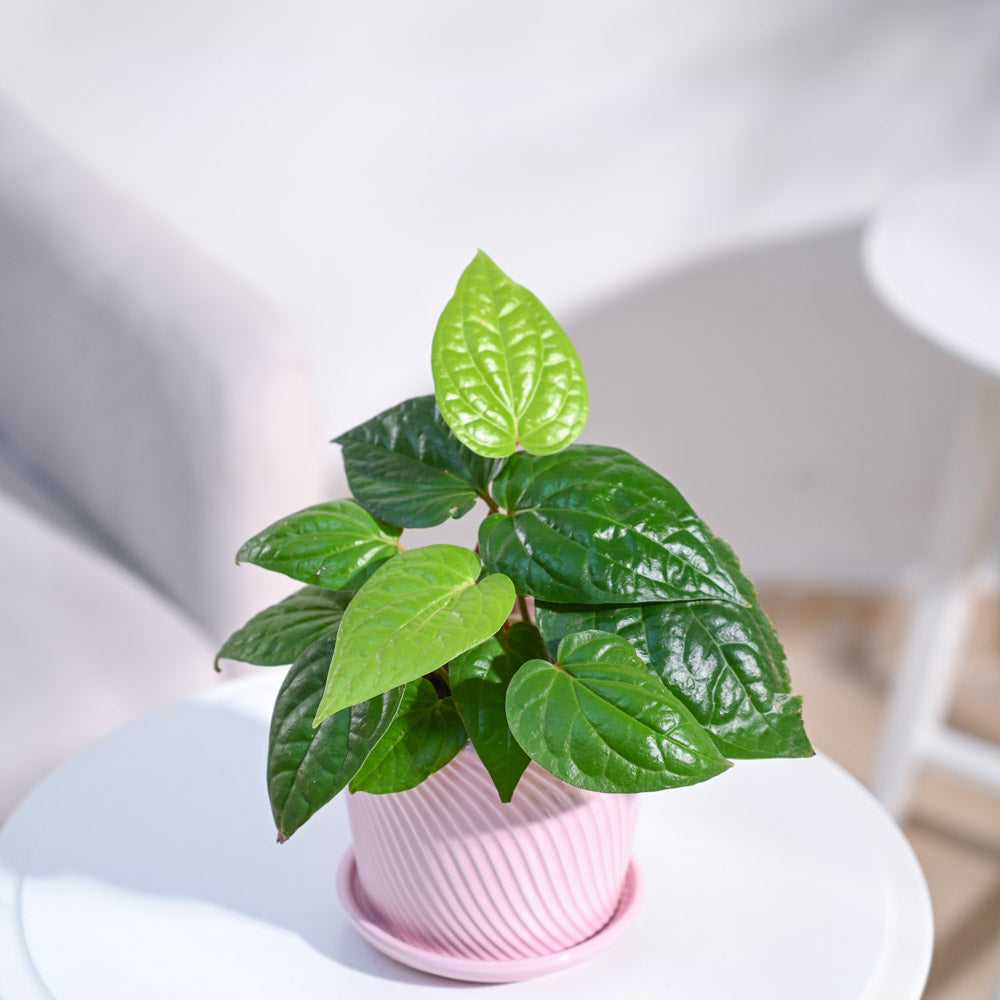




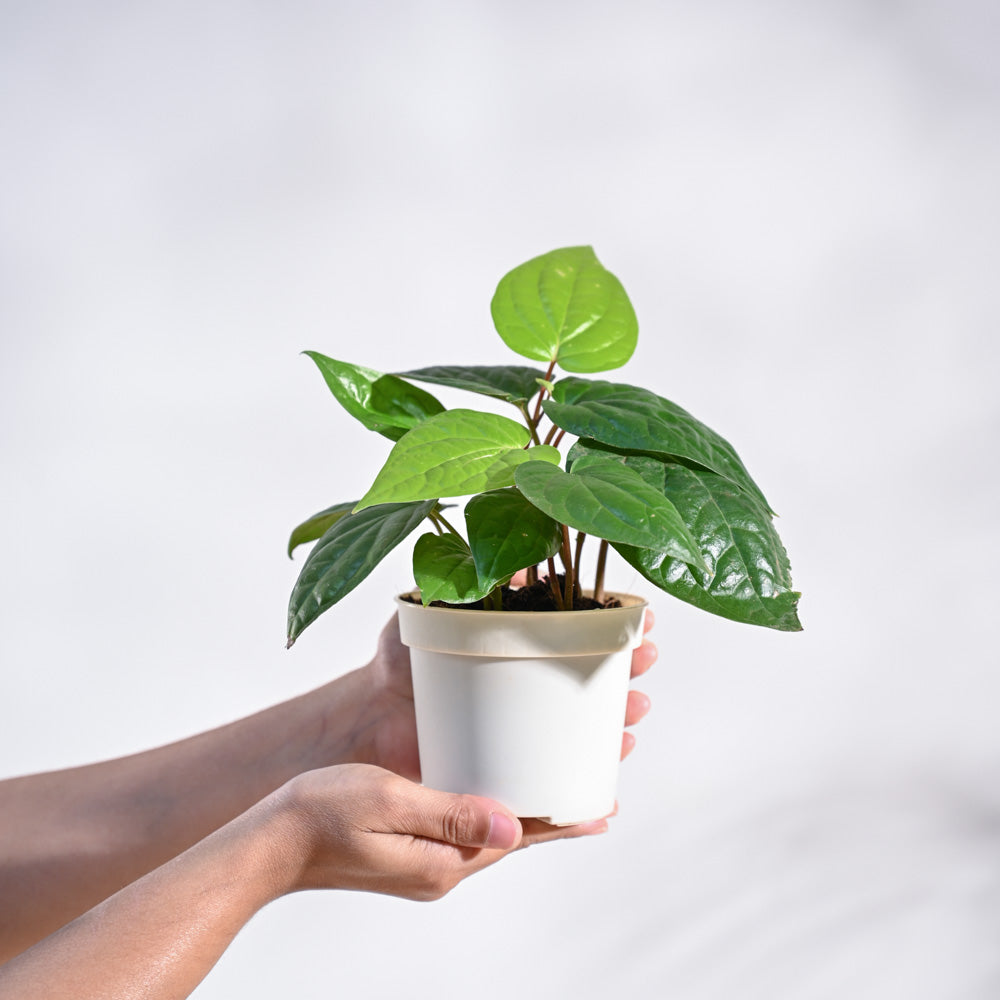


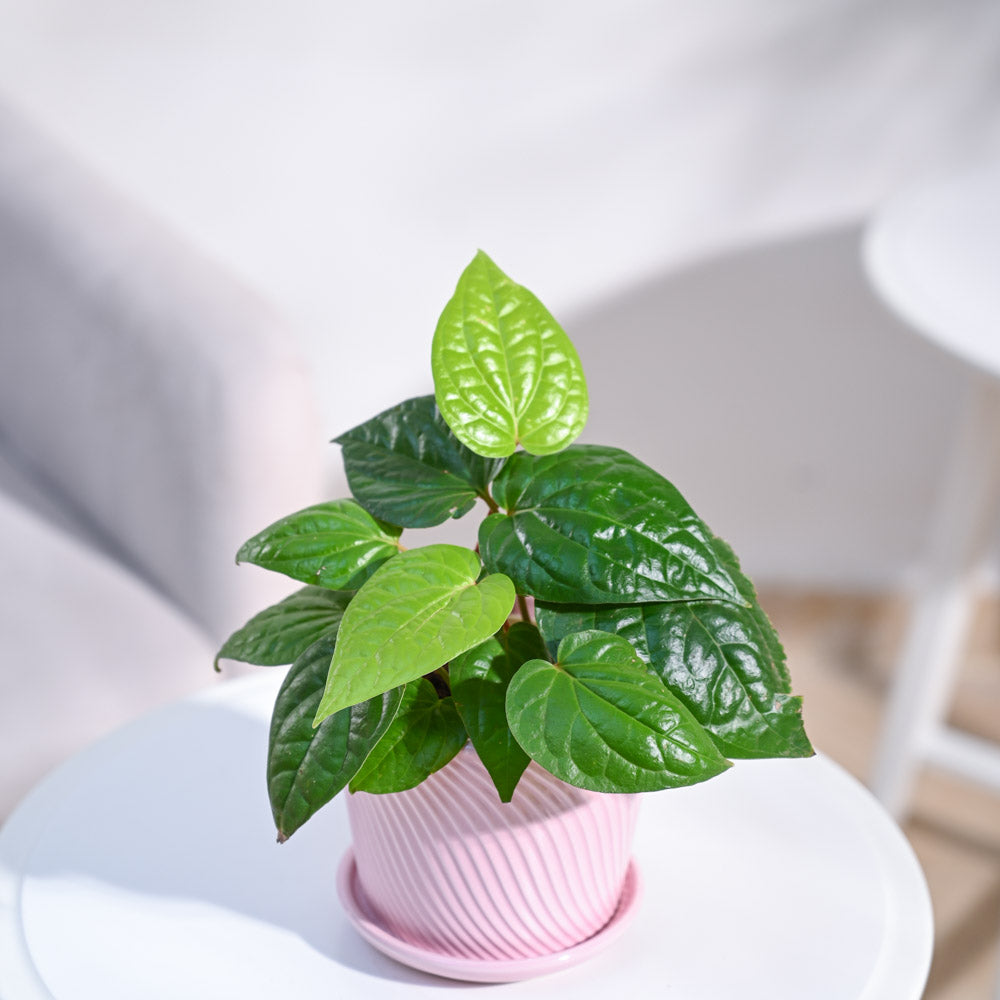
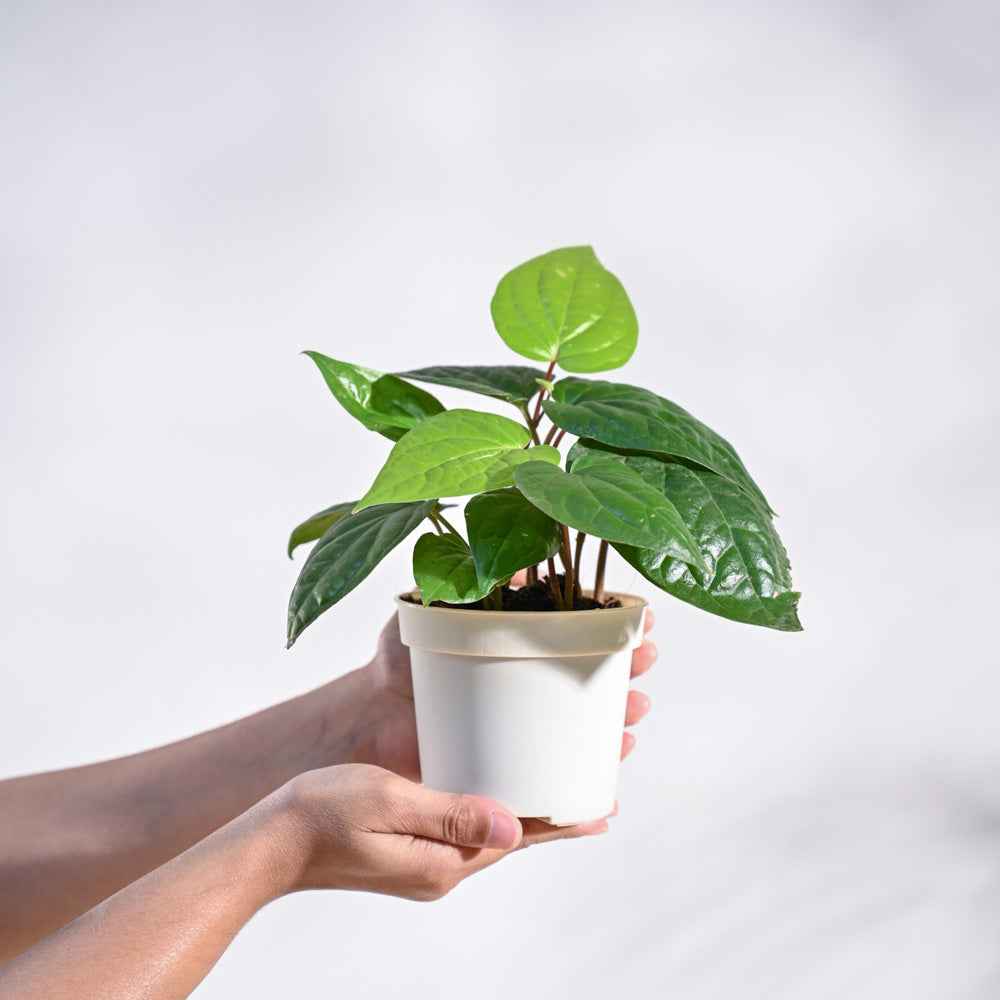
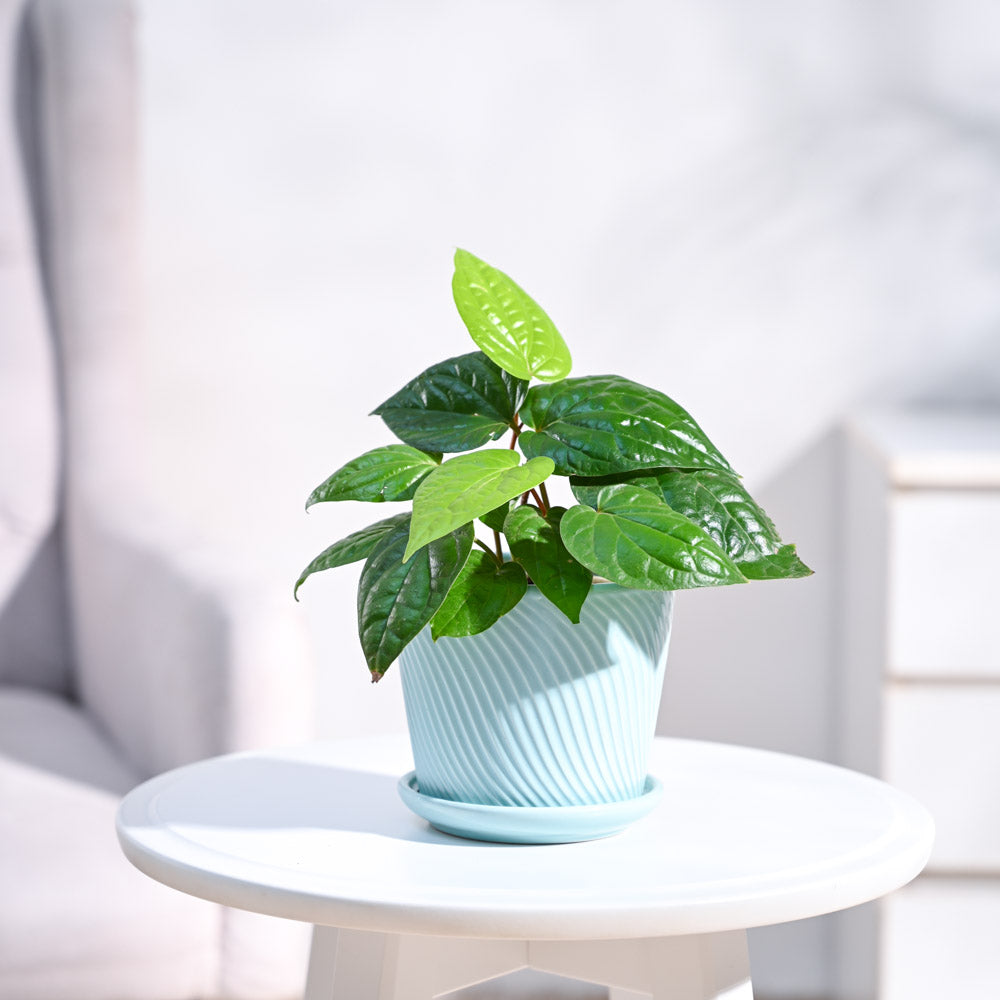
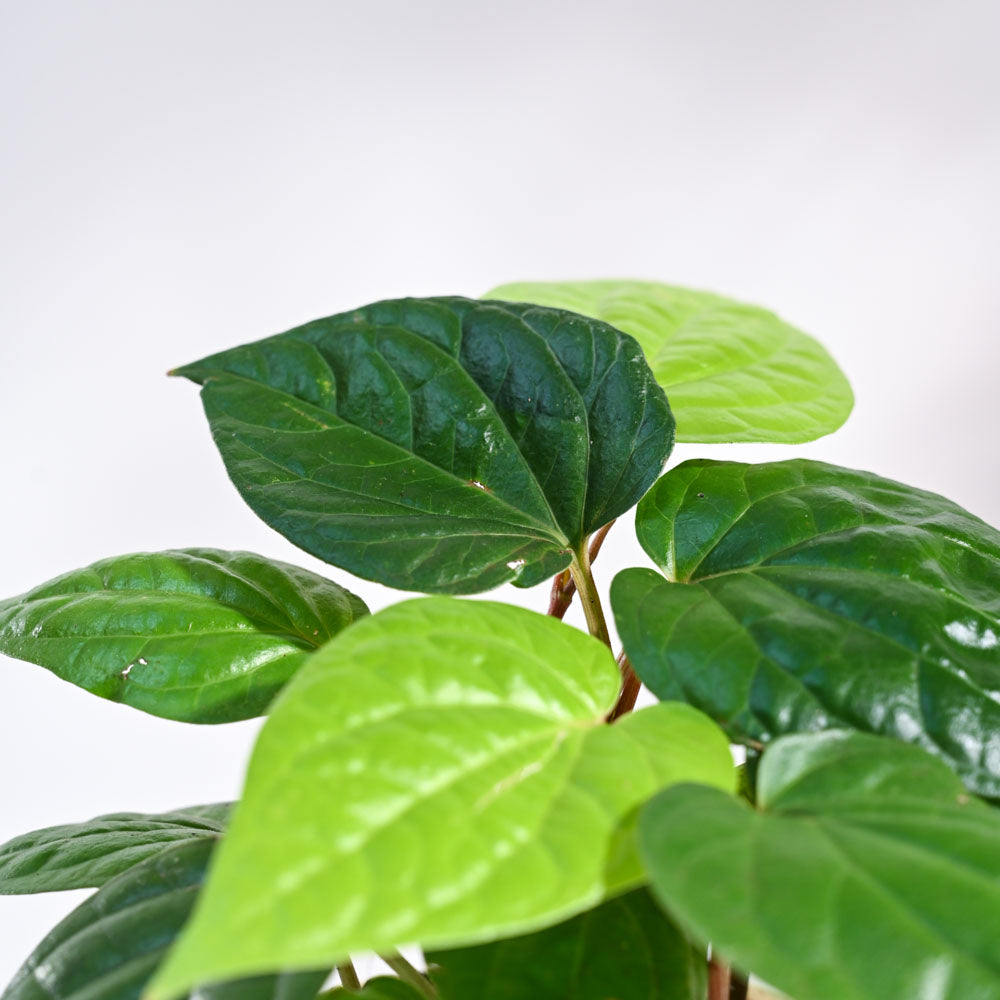
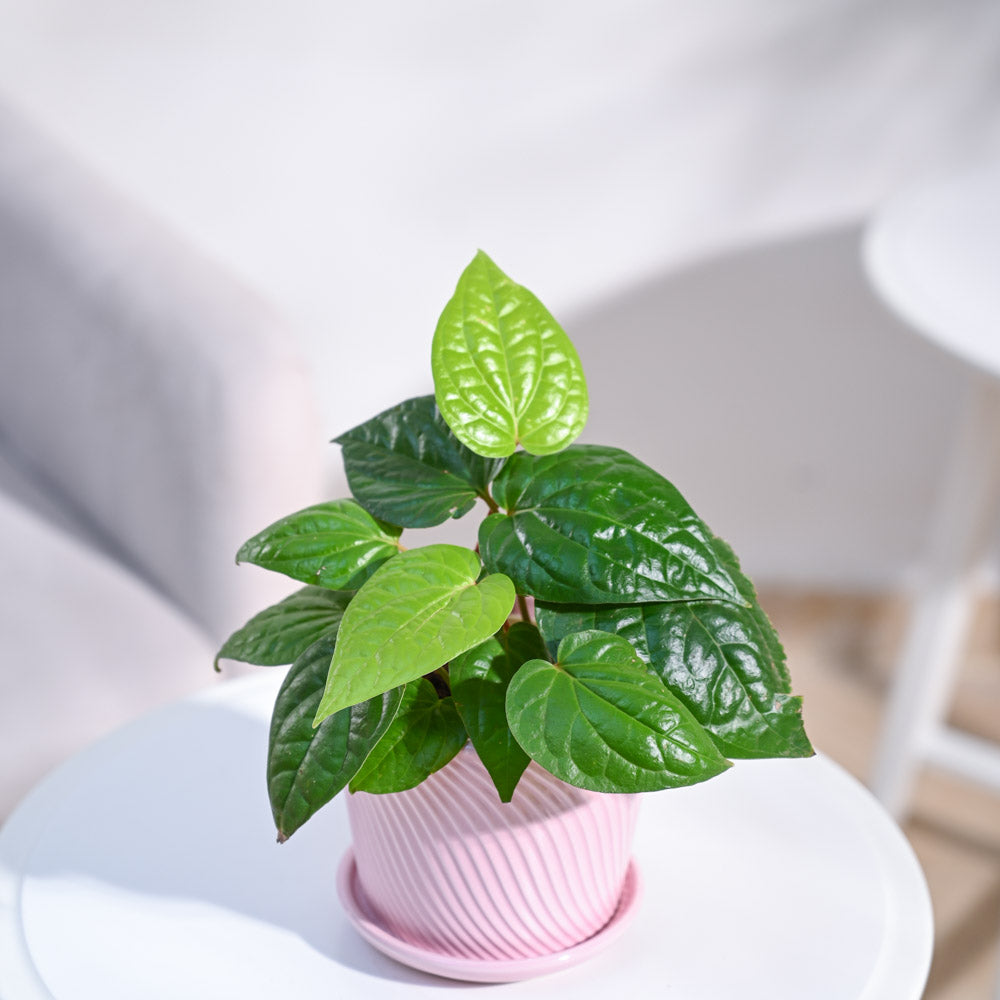
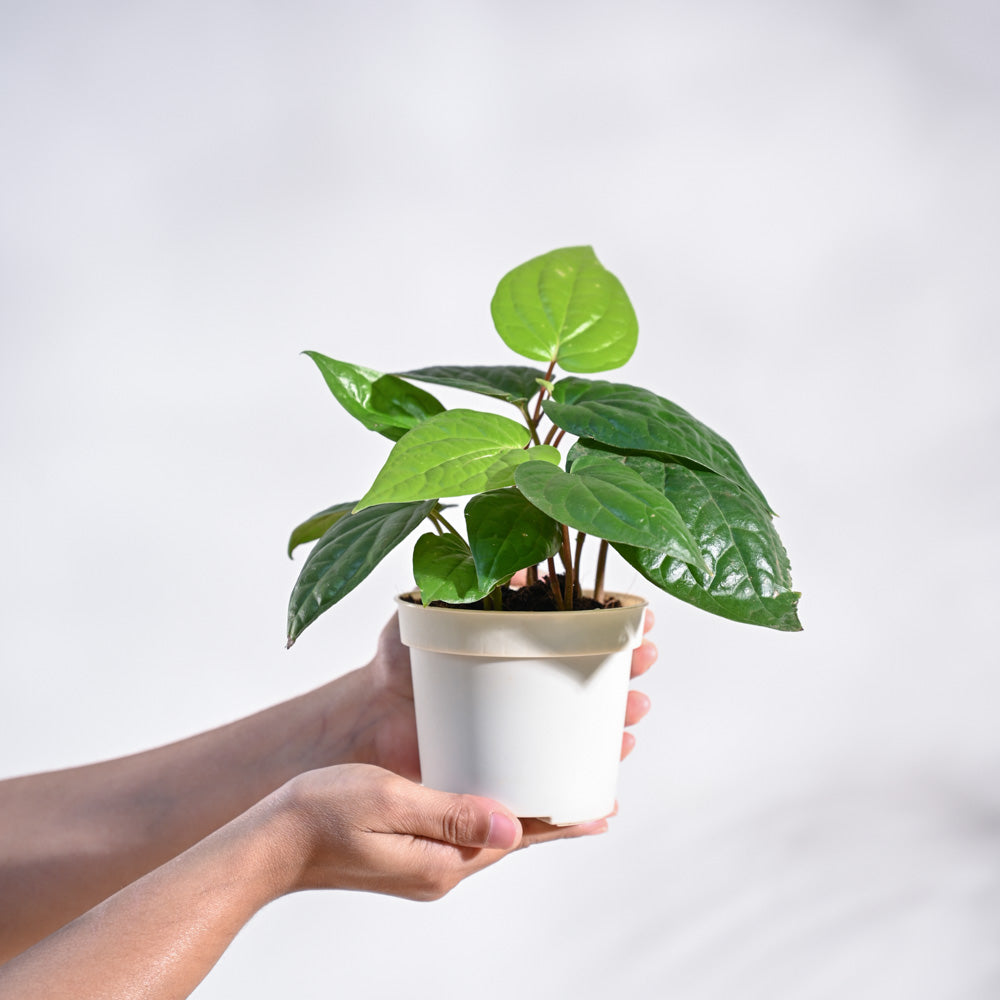
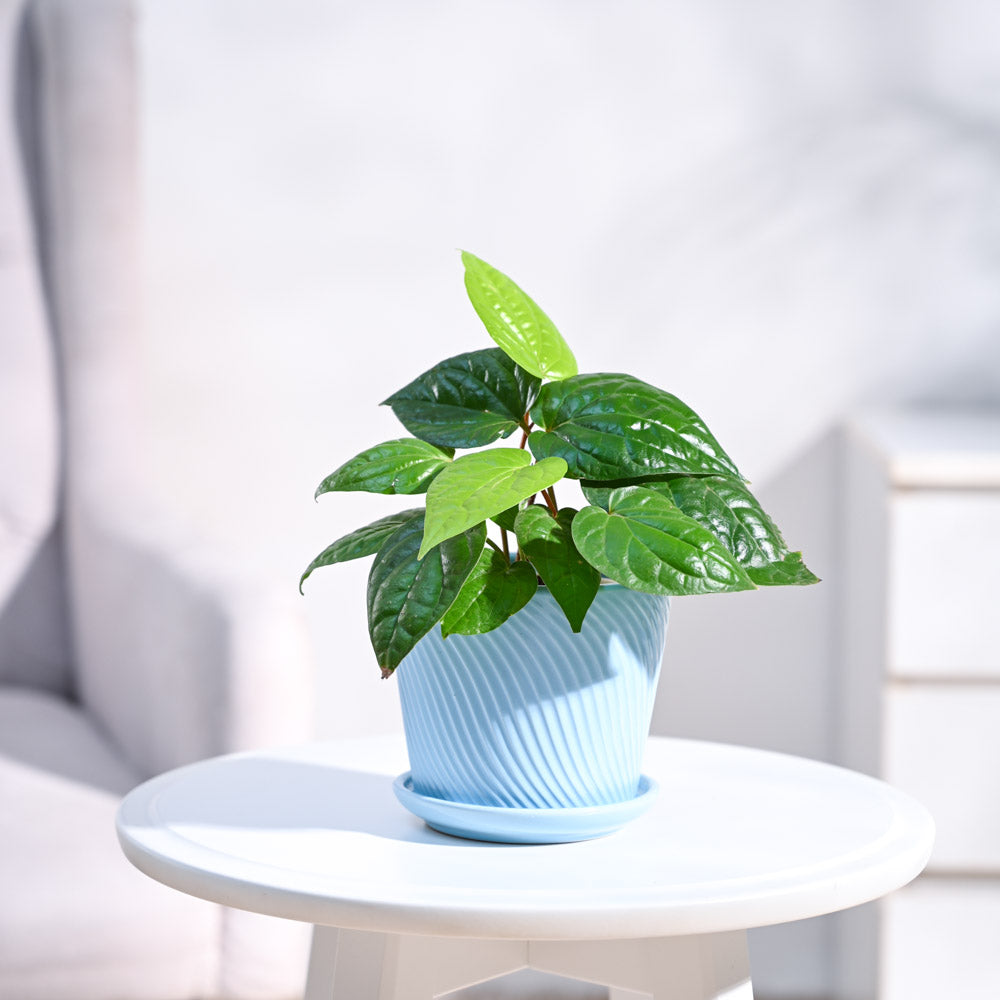

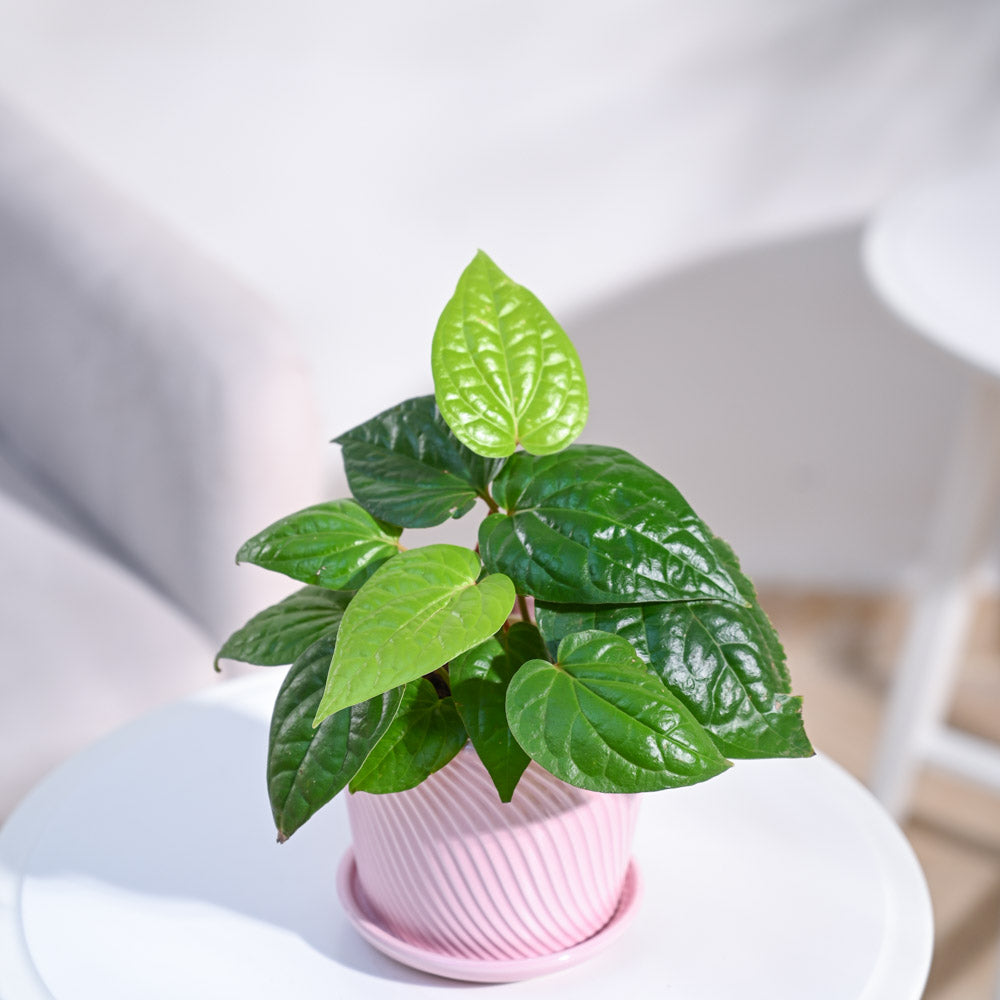
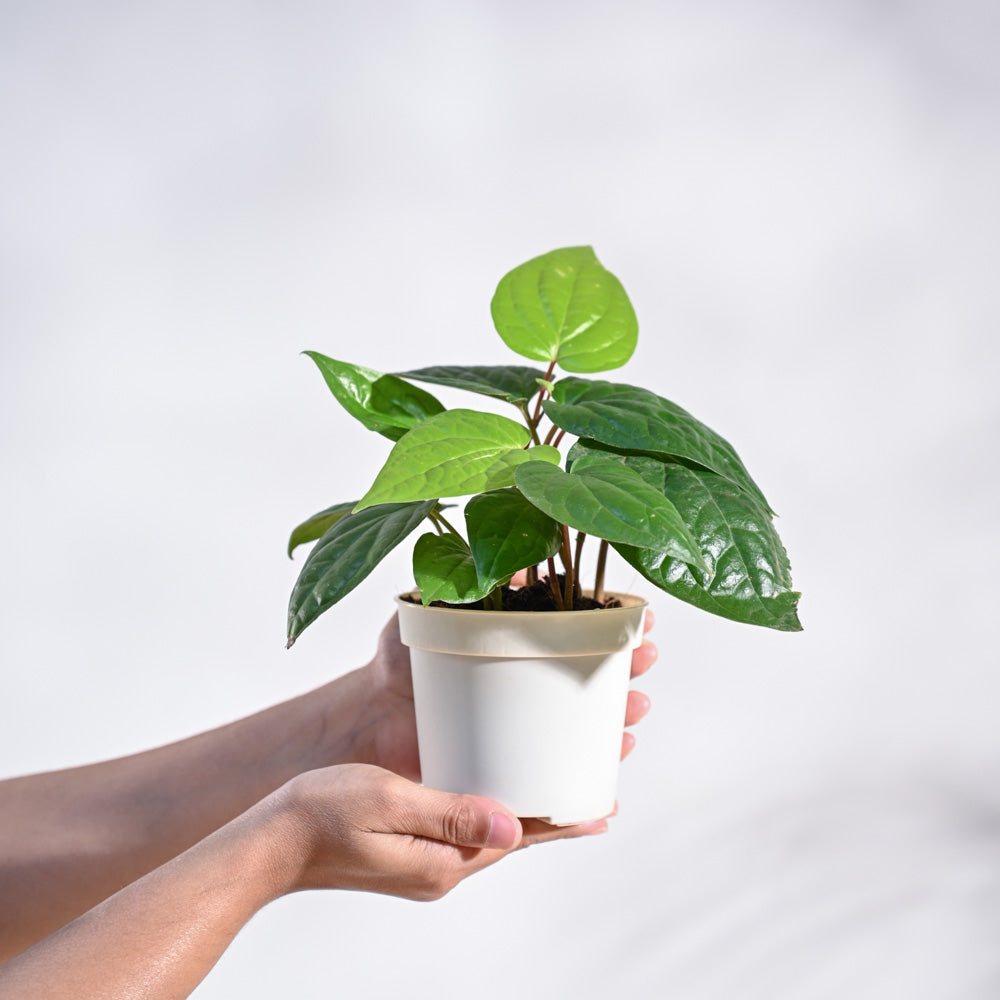



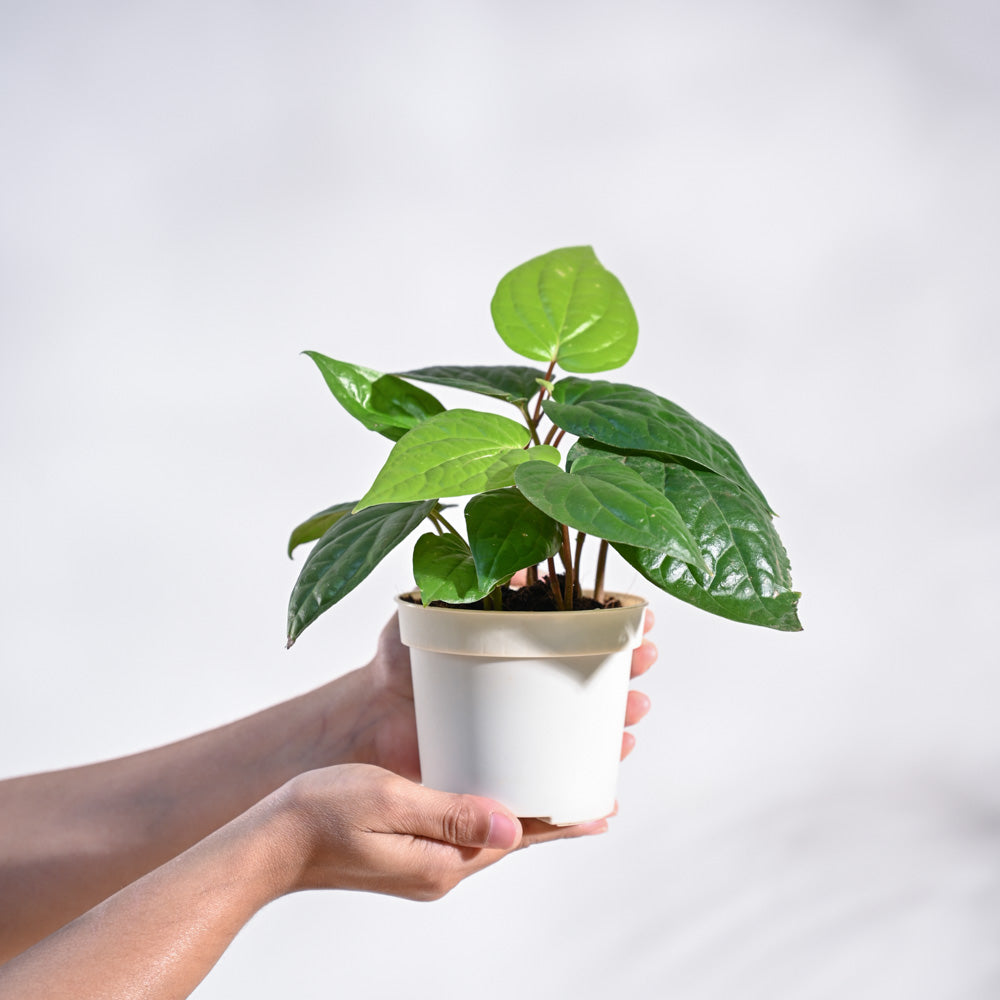


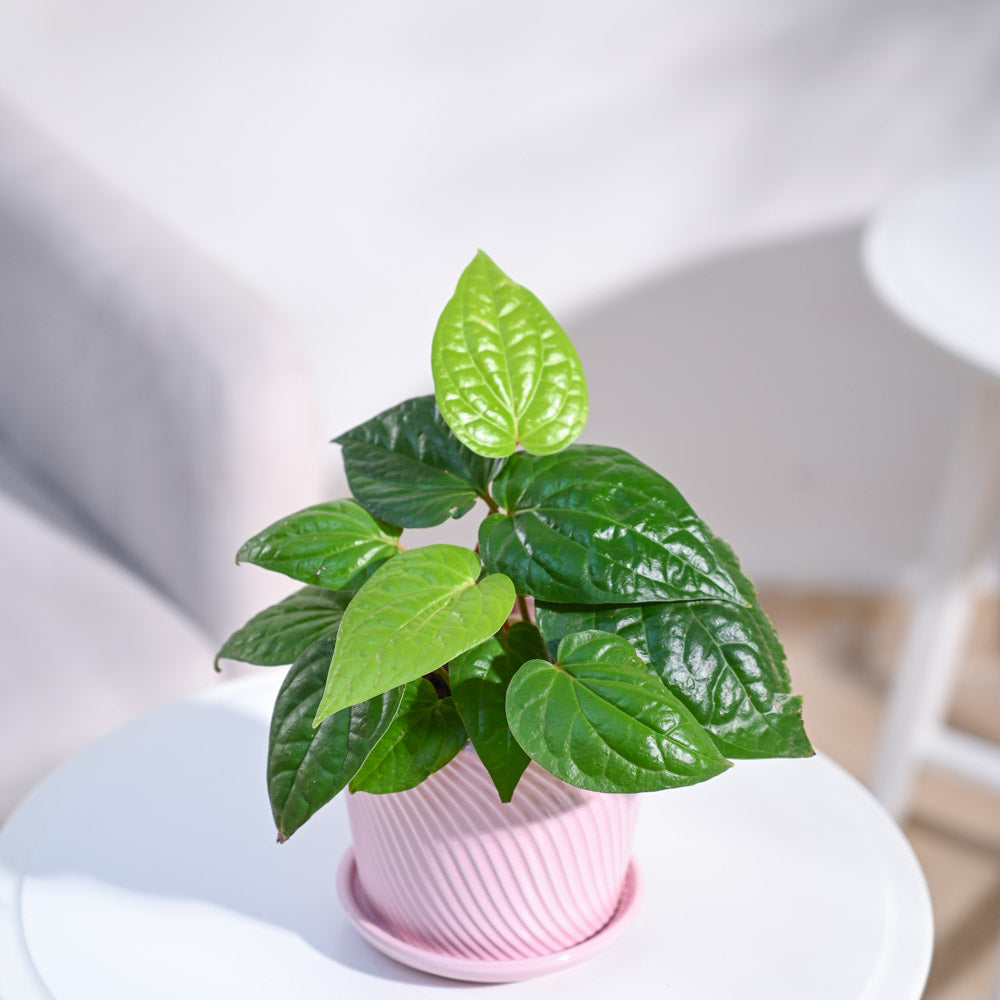
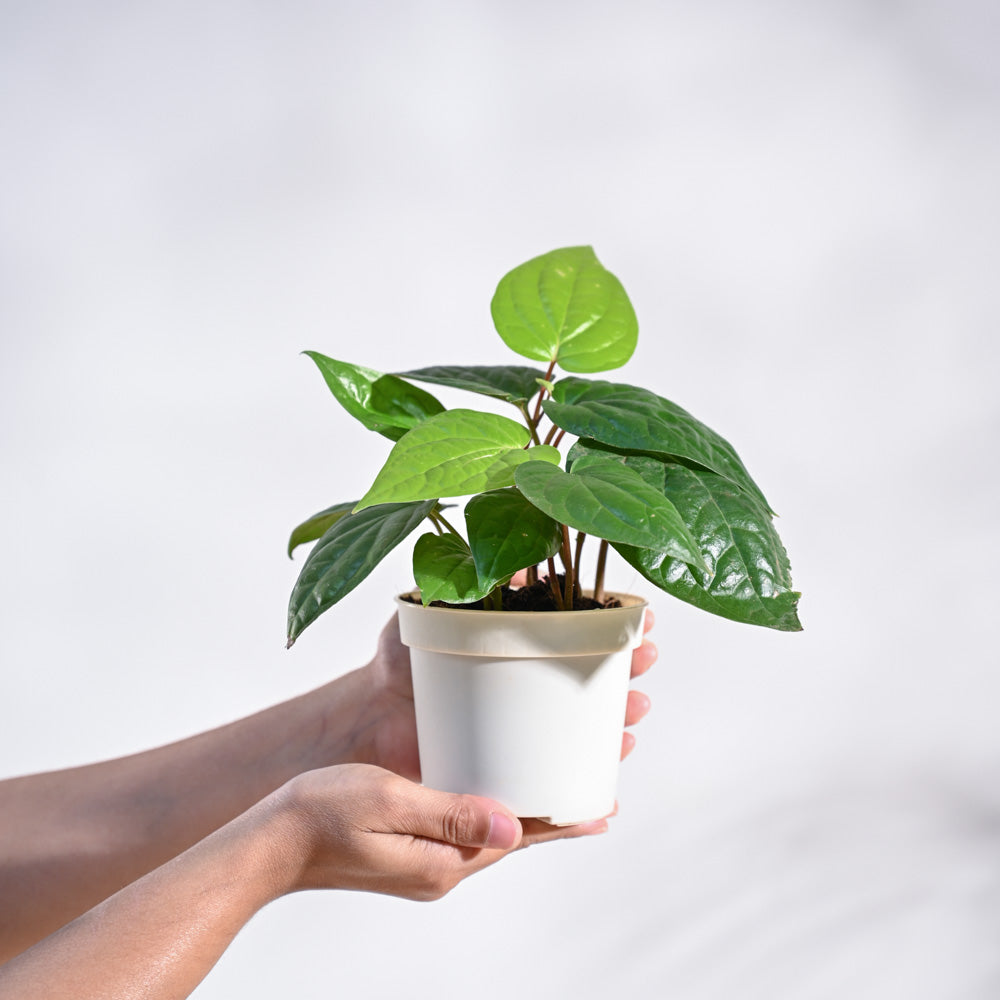
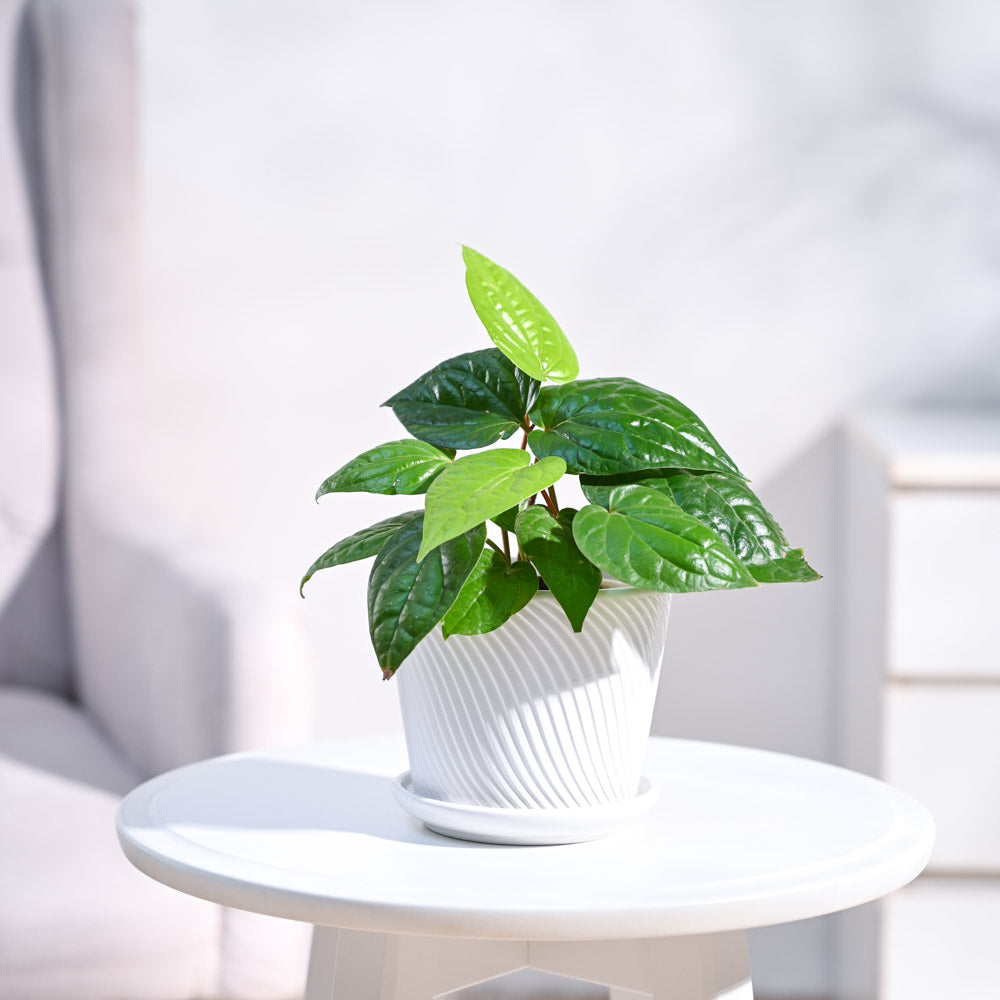


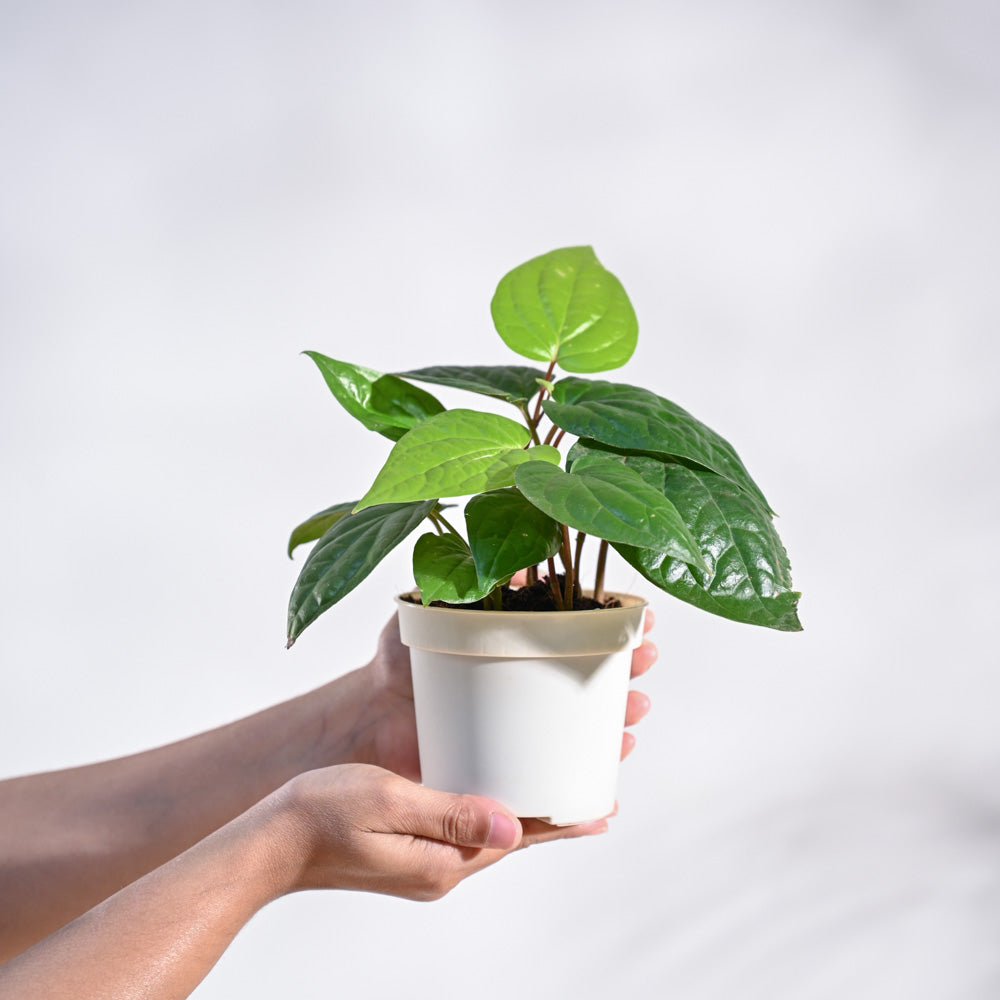


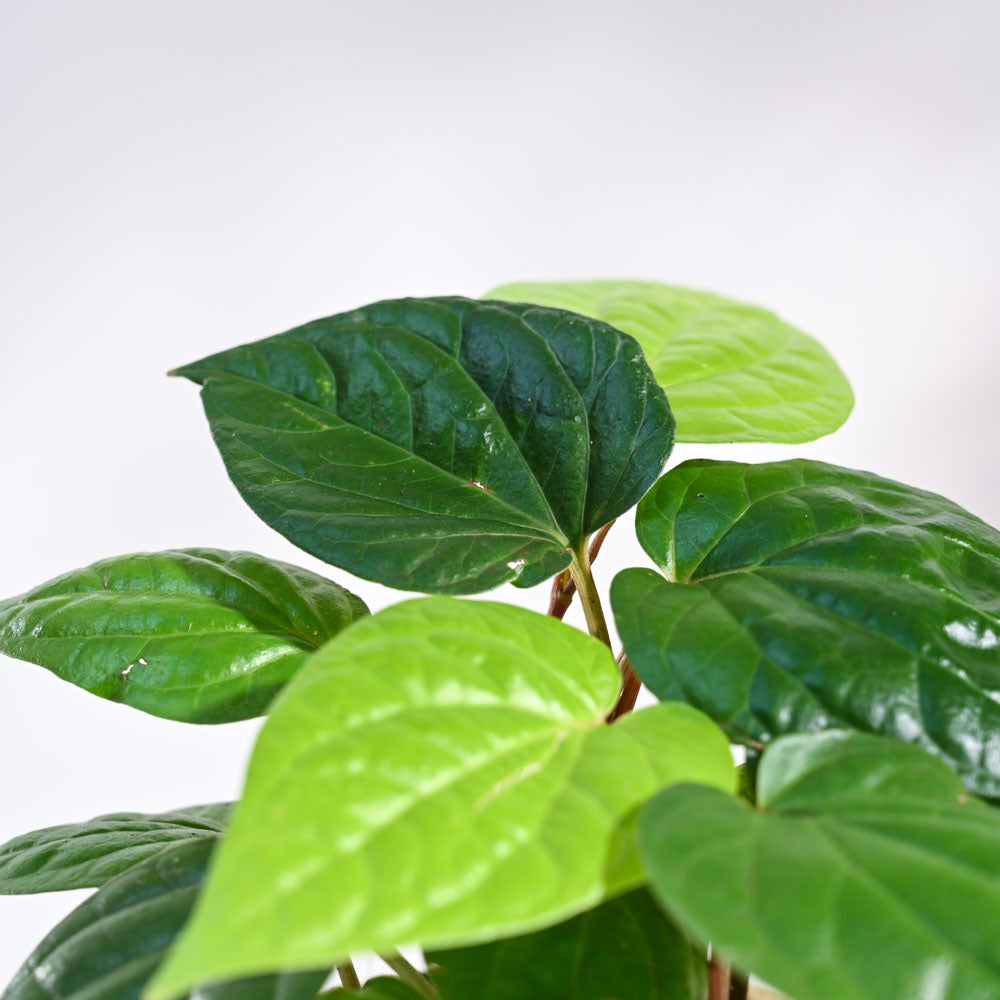

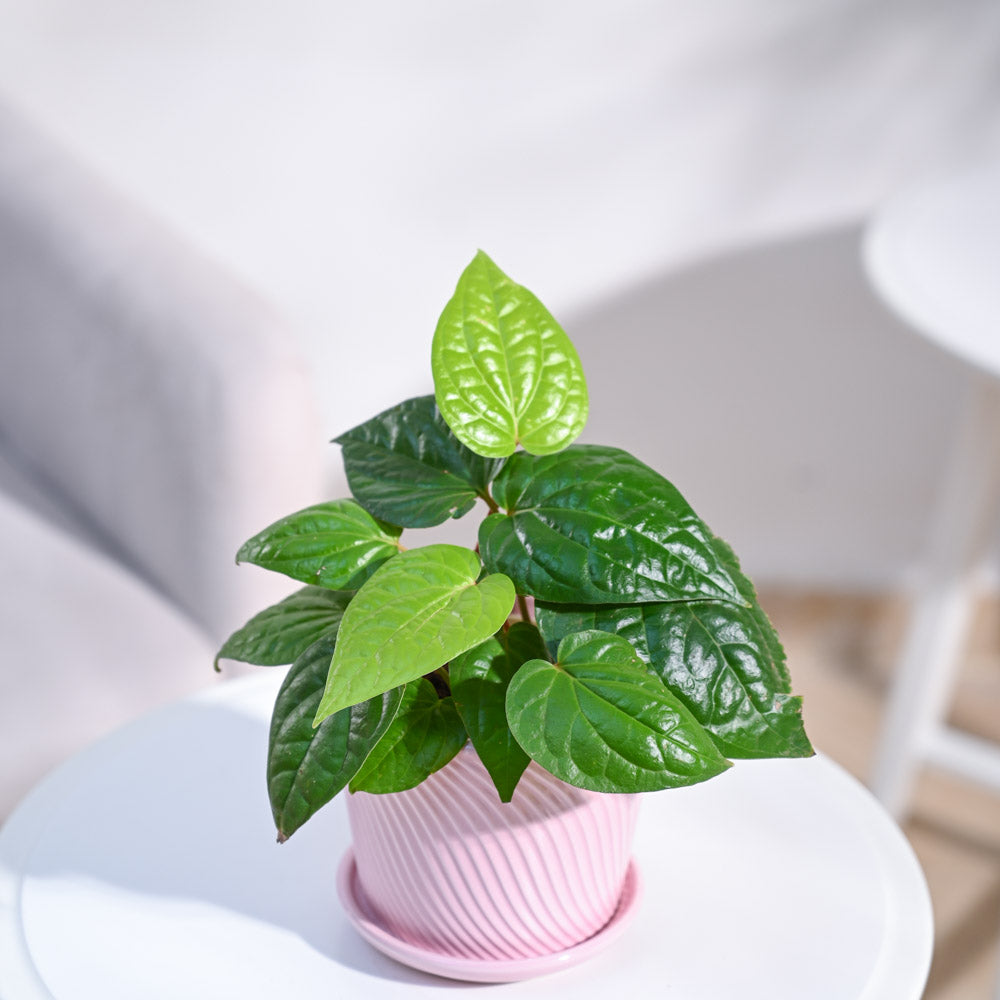
Light Guide

Why choose Ugaoo?

Hand grown by 200+ trained women farmers
Our plants carry the freshness, strength and soul of truly mindful cultivation and cared for through every sage.

Farm-fresh, hand-raised, and naturally nourished
our plants arrive ready to thrive longer, grow stronger, and bring lasting green joy to your home.

Nurtured with slow nutrition and advanced pest control.
What reaches you isn’t just a plant, but a promise of growth.
Product Specifications
| Name | Betel Leaf Plant (Magai Paan) |
|---|---|
| Category | PLANTS |
| Country of Origin | INDIA |
| Marketed by | Ugaoo Agritech Pvt Ltd, Plot No. 90, Floriculture Park, Ambi, MIDC, Talegaon Dabhade, Maharashtra 410507 |
| MRP | ₹299 (Incl. of all taxes) |
| Net Quantity | 1 |
| Manufactured by | Ugaoo Agritech Pvt Ltd, Plot No. 90, Floriculture Park, Ambi, MIDC, Talegaon Dabhade, Maharashtra 410507 |
| Customer Support | Email : support@ugaoo.com Call: +91-9129912991 |
Your plant travels safe so it can shine in your space.
Unbox with confidence!




From Happy Plant Parents
About Betel Leaf (Magai Paan) Plant
In the vast world of herbal plants, the betel leaf plant (Piper betle) shines as a lush green gem, celebrated for its numerous benefits and versatile applications. This plant, also known as Magai Paan, is a culturally significant evergreen herb native to our subcontinent. With its rich history, distinctive aroma, and a multitude of benefits, the betel leaf plant holds a special place in traditional practices, culinary delights, and holistic well-being.Betel leaf, known for its scientific name as Piper betle, is a heart-shaped, glossy, evergreen plant native to Southeast Asia and the Indian subcontinent. Its rich cultural heritage traces back centuries, where it plays a pivotal role in various rituals and traditional practices. The betel leaf is renowned for its distinctive aroma and taste, making it a cherished ingredient in culinary, medicinal, and cultural spheres.
Betel Leaf Benefits and Uses:
1. Medicinal Marvel:
There are countless magai paan health benefits. It is a rich source of vitamins, minerals, and essential oils. Chewing betel leaves is believed to help with digestion and even combat bad breath. Moreover, its anti-inflammatory properties can help alleviate various oral and respiratory ailments.2. Antioxidant Powerhouse:
The betel leaf is brimming with antioxidants, which can help protect the body from oxidative stress and chronic diseases. These antioxidants promote overall well-being and longevity.3. Digestive Aid:
The essential oils found in betel leaves stimulate the secretion of digestive juices, making it a natural remedy for indigestion and stomach discomfort. It is commonly used to make herbal potions and digestive teas.4. Skin Health:
The antimicrobial and anti-inflammatory properties of betel leaves make them a potent ingredient in skincare routines. They can be used to treat minor skin issues such as cuts, bruises, and acne.5. Traditional Practices:
Betel leaf uses don’t just stop at usage for health benefits. They additionally have cultural significance in many societies, where they are used in rituals, ceremonies, and as an offering to deities. They are also used as a mild stimulant, often chewed with areca nut and slaked lime for their mild psychoactive effects.Betel Leaf Plant Care Tips:
1. Choosing the Right Spot
When caring for your betel leaf plant, it's essential to select the ideal location. Betel leaf plants thrive in warm, humid conditions. Ensure they receive indirect sunlight, as direct sunlight may scorch the leaves.2. Watering:
Betel leaf plants need consistent moisture. Water them regularly, but be cautious not to overwater, as this can lead to root rot. Let the topsoil dry out slightly between watering.3. Soil and Potting
Plant your betel leaf in well-draining soil, ideally a mixture of garden soil and organic compost. A well-draining pot is essential to prevent waterlogging, which could harm your plant's health.4. Fertilization:
Use a balanced, slow-release fertilizer during the growing season (spring and summer) to promote healthy growth.5. Pruning:
Prune your betel leaf plant to encourage bushy growth and remove any yellow or damaged leaves.6. Pest Control:
Keep an eye out for pests and use organic pest control methods to protect your plant.7. Support and Training:
As the betel leaf plant grows, it may require support to prevent sprawling. Consider using stakes or trellises for support and training.Where to Keep Your Betel Leaf Plant
Cultivating a betel leaf plant can be a rewarding experience, but it requires the right conditions to flourish. Here are some essential tips on where to keep your betel leaf plant:1. Sunlight:
Betel leaf plants thrive in partial shade. Ensure they receive filtered sunlight, ideally in the morning or late afternoon, to prevent scorching.2. Soil:
Well-draining, slightly acidic soil is ideal for magai paan plants. A mixture of garden soil and organic compost works well.3. Container Gardening:
If you're short on outdoor space, betel leaf plants can be grown in containers or hanging baskets. This allows for better control over the soil quality and mobility.4. Temperature:
Betel leaf plants prefer a warm, tropical climate. They are sensitive to cold temperatures, so protect them during chilly weather.5. Humidity:
Maintain high humidity levels by misting the leaves regularly. This will keep the plant healthy and thriving.The Importance of the Betel Leaf Plant
The betel leaf plant holds great significance in various cultures and traditions. In many parts of Southeast Asia and the Indian subcontinent, it is a symbol of hospitality and respect. There are a few betel leaf uses in social gatherings as well - offering betel leaves and areca nuts is a traditional, customary way to welcome guests.Furthermore, the plant's therapeutic properties are deeply ingrained in traditional medicine systems. Its role in Ayurveda and traditional Chinese medicine highlights its importance in promoting holistic well-being.
In a modern context, the betel leaf continues to be celebrated for its culinary and medicinal uses. Its unique flavor enhances a wide range of dishes, from mouth-watering appetizers to soothing teas. Additionally, it remains a source of inspiration for researchers and herbalists exploring its untapped potential.





































































































